|
Art courtesy of Ken Fletcher (1976) The following is a sample from an upcoming Blackmoor setting book that I am working on. All rights Griffith Morgan and The Fellowship of the Thing, LTD. The Essential Blackmoor Core Concepts for Play in Dave Arneson’s Living World Griffith M. Morgan III Forward to Blackmoor! Blackmoor is obscured by the mists of time, and in its purest form, only ever existed when a group of gamers would gather in the Arneson family home, and later in Gail Gaylord’s dining room, in the early 1970’s. Yet, since the release of the feature documentary Secrets of Blackmoor, many are asking: What is Blackmoor? More importantly, they are asking: how can I play in this seminal world setting?
Blackmoor is the very first Fantasy Role Playing game setting. It originates in the Twin Cities of Minnesota where different kinds of play methods were being explored by a group of wargamers Dave Arneson referred to as, The Blackmoor Bunch. It is difficult to pinpoint an exact date for when the Blackmoor campaign begins. Some would say as early as the fall of 1970, others would argue for March of 1971. Led by Dave Arneson, their Campaign Referee, much of what we gamers call Role Playing today, evolved organically through the actions of players in the early Blackmoor game sessions. It is significant that everything the Blackmoor Bunch did, yes even those who played in these adventures, lent a hand in the invention of RPGs. Many of these players can claim the title to being the first to do something that has become common in the fantasy games we play today. Most notable being Pete Gaylord who asked if he could be a wizard. Arneson allowed and even encouraged these infusions of new ideas into his world setting. Thus Blackmoor is a quandary, in that it is highly collaborative and synergistic, unlike what one sees in the published versions of modern RPGs since D&D in 1974. Because of the nature of how RPGs are played, as a performance art form that only exists in the moment, very little remains today that can fully reveal exactly what happened during those first few years of gaming and how to reproduce the entirety of what was being played at that time in Dave Arneson’s basement game room. It is doubtful anyone can reproduce a true Blackmoor Campaign, as it came out of Dave Arneson’s unique vision for how a game campaign should be conducted which goes far and beyond what any game referee is capable of creating today. Certainly there is a great deal of lore about the world that has been revealed by Arneson’s players. Much of it is still preserved in the online forum, The Comeback Inn. Yet documented facts have a way of obscuring the essential truth to past events. This is the core premise here: how can one re-capture the essence of Blackmoor? Perhaps one needs to firmly understand that although Blackmoor originates as a role played historical war game campaign, almost immediately one see’s fantasy elements appear, The Red Wizard Coven, and even more surprisingly, a great deal of tongue in cheek humor, such as when a toll bridge gets embellished by Arneson and becomes a troll bridge. Blackmoor is constantly evolving. Consider that within a few years of having started the campaign, Arneson is sharing Referee duties with several other Referees and there are easily over a hundred developed characters exploring Arneson’s creation. Up until the publication of Dungeons & Dragons, and likely even afterward, the rules for Blackmoor are a moving target and are constantly changing. Arneson, and a select few referees, are home ruling based on what direction players are choosing to direct their activities. Rules are being quickly drafted and used, many of them are just as quickly discarded. Thus most of the rule concepts one finds in modern RPGs, that many would think are novelties, have already been explored within Blackmoor in its early stages, along with many more that most game world settings are not even capable or willing to attempt. Dave Arneson’s genius is expansive and what one sees of his ideation when his vision is then merged with Gary Gygax’s in Dungeons & Dragons is merely a glimmer of what is Blackmoor. The scope of Blackmoor as demonstrated by Arneson, cannot be presented within a small volume such as this, as Arneson conceived and implemented the only truly living fantasy campaign world setting in the history of tabletop games. What at first may seem simplistic and almost childish in this game setting, once comprehended and fully understood, reveals a highly sophisticated and expansive milieu, both within the game world and within the minds of Arneson and his Blackmoor Bunch. Arneson’s Blackmoor is highly complex and exists on several modes of scale that are operating parallel to each other in time. These overlapping modes can be described like so - a referee’d game with: Strategic Role Play between lords of realms, Socio-Economic internal management of domains, Strategic land, naval, and air maneuvers, Tactical tabletop war games between armies navies and sometimes flying creatures, Individual exploration and Role Play with personal development, and skirmish level tactical man to man/man to monster conflict. Ok, that seems overly complicated and I realize that after having spoken at such length about the scope and complexity of Blackmoor, you may be intimidated and even afraid to try your hand at creating a Blackmoor campaign of your own. Fear not, all of this complex ruling and background is not something anyone would expect you yourself to implement in your own Blackmoor campaign. Yes, it is possible to snap off just one piece of Arneson’s creation, just as D&D did, and explore the most fascinating element of his creation, the make believe story telling aspect; what most people have dubbed Role Playing, and what I refer to as The Adventure Game. All of this information is meant to guide you into creating your own Home Brewed setting based on Blackmoor and allow you to fully explore a variant of your own, because Blackmoor is at its best when a Referee takes Arneson’s unspoken yet fundamental philosophy for a Role Playing Campaign and then weaves their own story into what is already there. Most of all, Blackmoor is an easy setting to get one’s head around and you can easily bring this ‘First Fantasy Campaign’ to life in your own game room. Please let me know if there is anything that is of interest to a new Blackmoor referee and I may even add it to my outline as something that needs to be discussed within the manuscript. I am always open to criticism and suggestions. Thanks Griff Oh oh, I nearly forgot this. I love learning about gaming. You may want to check out this Blog post about different kinds of Experience Awards. I found it quite interesting: https://merricb.com/2020/09/20/milestones-and-experience-points/
2 Comments
I really should be finishing up the Cave Adventure series which starts here: www.secretsofblackmoor.com/blog/quick-and-dirty-disposable-dungeons-part-5-the-moaning-cavern Per my usual scatter shotgun blast of overthink I remembered I had mentioned my simple spell point system for OD&D. Many people asked if I could share this system. I had it on a separate hard drive which I had to dig out and pore over to find. You have to understand that I have piles of hard drives. As I glance across my desk area I can see 9 drives. I have many more. Film makers create a lot of data. I did find it today and I went through and tidied up some things, I hope the system makes sense. Worth noting: -It is intended to be fairly simple to use -It makes Magic Users more flexible and fun to play at lower levels -Magical use being based on Intelligence means that wizards are more variable in ability -It draws on ideas from several games, most notably: Steve Jackson Games, Wizard -This is yours to tinker with. Feel free to play with the equations. Do consider that as you get more 'simulationist' and detailed you may lose some of the old school simplicity and abstraction that I personally strive for -I have barely used this system, since I misplaced it after my previous computer exploded, try it out and let me know what you think -This may also work for AD&D just as well. Hopefully I didn't miss anything as I rewrote this. Let me know if anything seems confusing, I will return and edit some more! Griff's system for Magic Spell points for OD&D
Something worth noting and that completely astounds me, is that despite decades of time in which role playing games have evolved into better systems, the same old magic system remains in place for d20 games as was being used in the 1974 version of D&D; with charts for spell acquisition by level and no real influence on performance related to the casting character's main attribute. I realized this had to go, so I have devised my own Concentration or Spell Point system for both Magic Users and Clerics. In order to make low level characters more fun to play, I have allowed them to access more spells at first level. The caveat is that spell failure is also possible. If you compare an 18 Intelligence 9th level wizard’s spell totals in this system to OD&D, you will find that at that level, both systems are equal in terms of total spells. OD&D wizard of 9th level gets spells * level: 4 x 1; 3 x 2; 3 x 3; 2 x 4; 1 x 5. This is equal to 32 spell points. An 18 Intelligence, 9th level, wizard in this system is bonus of 3 + (level 9 * 3 Bonus) = 30 Spell points. OOPS! it's pretty darned close though. Determining Spell Points Spell casters gain spell points based on their main attribute modifier. This number is then multiplied by their character’s experience level. i.e. a second level character with a +2 modifier has 6 spell points. Modifier + (mod * level) Spell Cost In order to cast a spell a character must expend spell points equivalent to the level of spell being cast. Since casting spells requires intense concentration a spell caster uses these points like hit points that represent mental exhaustion. -A spell caster can cast a last desperate spell and use more points than what they have left. -Falling to zero causes the character to fall unconscious. A negative number results in a coma state, much like Sparrow Hawk in a Wizard of Earthsea. It requires another more powerful wizard to draw the player out of the coma between adventures. This is a magical problem, clerics need not apply. -A spell caster recovers 1 spell point per hour rested. -Caster Intelligence also affects how well and for how long they cast spells. Intelligence Based Modifiers 10 or less Cannot use magic. 11 No bonuses, yet can be a very bad wizard. 12- 14 +1 Spell Points (SP) and bonus to chance of success when casting. 15-16 +2 SP and bonus to chance of success as well as +1 duration . -1 for enemy saves.. 17-18 +3 SP and bonus for casting +3 duration -2 for enemy saves. Memorizing Spells Spells require a minimum Attribute and Experience Level to know and cast them. 10 + Level + Magical Bonus. A 3rd level wizard with intelligence of 15 can thus only know spells of levels 2nd and under. i.e. 10 + (level 3 + 2 intelligence modifier) = 15 Required points to Know Spells based on level: Level of spell Value needed to cast 1st 12 2nd 14 3rd 16 4th 17 5th 21 6th 23 7th 25 8th 27 9th 29 Spell Success and Failure Spells require a D20 roll of less than Intelligence - spell level while in combat. A 16 Intelligence wizard casts a 3rd level spell, thus they must roll 16 - 3 = 13 or lower to succeed. Spell failure is common, yet now a wizard gets to cast spells more often. A wizard can opt to concentrate more deeply and be slower thus they have no spell level difficulty modifier, yet their spell is released at the end of the combat round. A successful attack on a concentrating wizard negates the spell entirely.* Spell casting while not in combat gets a free success. i.e. casting a light spell is a good example of this. *I run OD&D as it was originally intended, thus initiative is not in the game system. All actions occur in parallel. Known Spells, Spell Books, and Magical Scrolls There are generally two kinds of written spells. Spell scrolls that are non-magical instructions allow a caster to learn the spell, and magical scrolls allow a caster to use the spell once without expending spell points and allowing the player to cast a spell above their ability level they also never fail as the failure roll comes when making the scroll. Other than scrolls, wizards can only cast spells they know. Known spells can be re-learned if a week is spent between adventures doing so; this allows wizards to pick different known spells. In non-combat situations a spell caster can read a spell that is not memorized from a book or non magical scroll. The limit to a wizard’s known spells is Int + Level. Spell Acquisition 10 + caster bonus When a wizard first wants to acquire spells for their spell book they must choose a spell and then make a die roll modified by the attribute chart casting bonus. Beating a ten means that spell is known, a fail means the wizard cannot try to have that spell in his spell book. Thus a wizard with a 15 Intelligence must roll 10 + 2 bonus = 12 or under in order to gain a specific spell. Emergence of Blackmoor Poster Sets now available in limited quantity in our STORE: store.secretsofblackmoor.com/ Images by Von Allen @ https://www.vonallan.com/ This is a continuation of a discussion about making up your own adventures, or as it is commonly called: Home Brewing. A previous entry here: https://www.secretsofblackmoor.com/blog/june-17th-2020 I constantly see people making comments about Story in RPGs. I feel many of these comments are not very well thought out. It is a lot like how people describe Role Playing which I also feel is much more nuanced than merely play acting. From my perspective everything within the RPG experience is both role playing and story. As I discuss the various locations in the Riverine Cavern Complex my descriptions are having to become more and more detailed and complex. This is a bit misleading. I am describing these locations as examples for an adventure, but I never write them out like this for my own game. In fact, entire dungeons have been created with really simple descriptions and maybe a tiny note to go with. Quick and dirty notation was like so: Qty Monster HD AC Treasure... or, 4 Skeletons Hd: 1/2 AC: 6 Treasure: 100 CP, 300 SP, 500 GP, +1 sword, scroll 1 spell, potion And this is where a great deal of confusion occurs when today's players see an old dungeon. Their first response will be "There is no story here!" I'm here to tell you that everything has a narrative, or story, even this simple room key. Some players like Big Arc Story, others like Subplots, a lot of people like the little Micro Narratives they engage with and solve immediately whether it's a combat encounter, or something more sublime - It's all story. Micro Narratives
My room example doesn't appear out of thin air. Those skeletons are an animated magical undead. They were created by someone. Maybe they have been in this room for hundreds of years and began as zombies. By now their flesh has fallen off leaving just the skeletons. If the wizard who created them passed away ages ago I can know how they were created and I don't need to deal with my wizard at all. She's gone gone gone. I do know my Micro Narrative and can expand on this simple theme. As this is just one room of many I can decide that our wizard placed these creatures here to guard a minor treasure. Because these skeletons are still here I can also know that no one has succeeded in pilfering their treasure. Maybe I neglected to draw in an extra hidden chamber for the treasure when I drew my map. Yet, if I were a wizard I wouldn't go leaving my treasure in plain site. I would be sneaky. I can infer that perhaps this treasure is inside of a trapped wooden chest concealed in a low nook behind a secret wall panel. What I am doing is creating a tiny little story. Who put the skeletons here and what is the purpose for them being here. Why is there treasure here and why is it concealed? When you create these stories they can become as varied and complex as you like, yet it's a good idea for around 80% of them to be really simple. If you have too many encounters that tie into a big arc story, you create an info overload for your players. They're going to be so busy parsing all their data in order to solve the greater mystery that they won't have time to explore and adventure. Each room can have a tiny story of its own that is not in any way connected to the greater story in a campaign. I have several stories running in my game that are so big I don't even expect my players to solve them. The big arc story is more for me as referee. I want to know why some of the places and objects my players find came into existence. If I am playing off my big arc story my major plot points are simple: -An ancient queen was betrayed by the elves. -Dwarven lore hints of this event, thus the dwarves aren't too keen on Elves. -Only certain elves can know this suppressed history, an elf player would not know this. Yet they could be drawn into a secret order of elven spies. -Somehow the goblins are a key to this, yet most consider them to be evil. -Oh yeah, there is a rumor that the queen is waiting to be brought back to life so she can exact revenge on the elves. My predominantly human players are going to be stuck in a moral quandary of epic proportions if they ever do locate her. They already accidentally released a trapped demon in one of their other adventures. I've also made a point of seeding some details to the greater story in this adventure. It's my campaign story arc, perhaps you have your own you can throw into this game. Here I go again: Everyone and everything has a story, this is true for real life and also true for our games. More locations from the Riverine Cavern Complex follow. Secret Base This location is what remains of a semi permanent base created by a troop of dwarves working in conjunction with a scholar named Piume. They tunneled out a little base within the cavern complex in order to be able to remain here for some time as they explored the caverns. It's a small complex of rooms as dwellings for the Dwarves. Lots of once ornate broken furniture can be found here; all in smaller dwarven proportions. There is a hidden passage that is merely 3 feet wide leading to Piume's chamber. Piume's Chamber The first thing players will note is the body of a hapless adventurer that died here some time ago. The room is dry enough that the corpse has become mummified. A close examination will reveal many small stab wounds most likely caused by a dagger. Info: human, leather armor, rotted clothes, a pouch with some coins of little value. This room has not been inhabited for a long time, yet some of the furniture remains. All of it is very ornate and gilded in gold leaf, a chair, a table, a bed, and a wood chest. Dwarves will find this style of furniture familiar as it is of dwarven manufacture. It's fairly valuable stuff if you can find the right buyer, but it is also a bit awkward to carry out of this place. The table and bed would need to be dismantled in order to get them through the entrance passage. The floor has many pieces of broken crystal glass. A telling detail is a goblet stem. Sitting on the table is a book that is so old it will fall apart if opened. A crystal decanter with a stopper full of dark liquid; this is old wine that has turned to vinegar. There is also an old dagger. If anyone touches the dagger, they've made a grave mistake. This is a cursed dagger that was left here to guard the room when the place was abandoned. It will activate and fly through the air lunging at whomever happens to be here. It does damage like a normal dagger. It has an Armor class of 2 in my OD&D game, meaning that it is hard to hit. It will deactivate if it kills everyone in the room, or if someone can hit it for 6 points damage. It then falls to the floor until someone else touches it. If the wood chest, which is empty, is moved from the wall and old parchment will be found. It is an old unsent letter. My Dearest Cleomi, I miss you dearly. I am nearly done with my exploration of the caverns. I have made some important discoveries in the past months. It seems clear that the ancient Ghebelin used these caves as a secret pathway through the mountains. There is even a portal that leads to another land far far away. Yet the place is now a sunken water logged labyrinth of stones. Having traversed the portal for a short visitation, I was able to read some of the ancient writing and I believe that this place is none other than the ancient seat of power of the great Ghebelin Queen Aruanni. The ruins are clearly of a large city. It is full of mystical traps of all kinds and much too dangerous for me to explore without the aid of a sensitive who can detect all these grave dangers ahead of time. Sadly, we lost one of my dwarven companions when she was devoured by an invisible creature. The dwarves are in mourning over the loss of their friend and have begun to write a song about her that will be placed in the ancestral records of their clan. I look forward to reuniting with again, yours - Piume. This should be printed out and folded in half and then handed to the players during the game. I use a lot of props. Sometimes opening and reading is a bad thing; like reading a cursed scroll. They're lucky this time, but they know me as a referee, and this will be a moment of anxiety and chance taking for whomever opens this piece of paper. The Gateway to the Marshes This location has a set of 7 prominent stalgamites in a perfect circle. A detect treasure, or gems spell would reveal that 7 Gems are encased within these natural pillars of stone. one can remove them by chipping away the stone, yet it will also damage the true purpose of this location, which is as a magical teleportation portal to the location of an ancient city that is now sunk into the fetid swamp full of all sorts of dangers. Stepping inside the circle will cause the player to disappear and reappear in a ruined city that has been consumed by a marsh. Lucky for them, they appear on high ground. There is a set of 8 foot tall pillars in the other location as well. One can step out of the circle of pillars and then step back into it and get teleported back to the caverns. The marsh area is surrounded by fallen ruins of buildings. The place is very dangerous. Any wandering monster encounter here will be with something entirely supernatural that is partly invisible. Going back thrugh the portal is a very good idea. That should take care of todays discussion on creating adventures quickly. There isn't much more to go as far as the described areas are concerned. Strangely enough, I still haven't bothered to create a map. Don't forget to share out website link with friends: www.secretsofblackmoor.com/ QUICK AND DIRTY DISPOSABLE DUNGEONS - PART 8: Mapping your Dungeons, adding mood and scale6/17/2020 Continued from this post: https://www.secretsofblackmoor.com/blog/quick-and-dirty-disposable-dungeons-part-7-the-side-quest-to-retro-rpg-terror As I continue the design of my caves, I think it's time to talk about mapping a bit. If you are an older gamer, much of what I write is useless to you. You likely already know all of this info via your own gaming experience. As a side note. I grew up partly in Italy during the 1960's. I've been in a lot of castles, thus my mental image of our dungeons is a bit different. My father's research program was located in a napoleonic fortress. Strangely, my parents would let me wander the place alone. It was very unsafe. The central stairwell, a big round shaft, had no railings and I recall the steps being at about a 45 degree angle. One day I decided to explore the third story of the place. Going up was easy. Coming down was frightening. I think the drop to the floor below was about 60-80 feet. I was probably 4-5 years old and my little knees were shaking. Did I mention scorpions? The place was crawling with scorpions. My sister and I would catch them. Visualizing your Dungeon Make no mistake, Dave Arneson invented dungeon adventures. Although his dungeon was only 6 levels deep when he first created it, it would later expand much deeper and become a 10 level mega dungeon. We actually made a 3d model for the film to show just how big Blackmoor Dungeon is: https://www.youtube.com/watch?v=_y7fYY1JUPI Not only did Arneson expand his dungeon vertically, he expanded it sideways. His understanding of an underground place was very imaginative. Thus while his maps may not seem too exciting I am convinced his descriptions as he ran these maps in a game must have been amazing. Many people have examined his maps and wondered why the stair wells do not match up. You can lay the maps one on top of the other and no two stair wells will align properly. This is because his stairs are not like stairs in an apartment building. We aren't looking at modern architecture in his dungeon. This is tunnel work down into the ground. Once you step on a stairwell you could be traveling 50' down before you end up on the next level. Arneson's maps reveal that these stairs are often curved, winding, and narrow. They corkscrew through the stone and can be disorienting. Stairwells are often overlooked by Referees. You can put things in stairwells, or have encounters there. The stair treads in the Orcian way would suddenly flip down and become a slide and you would be delivered to the deep levels of the dungeon where the orcs waited for victims. This brings me to another important aspect of RPG play, the descriptive role playing done by the Referee. Immersion is the Name of the Game Our underworlds are dark and terrifying places. Yet I often see players and referees turn their games into a simple: 10' 20' 30' a door at the end of the passage. I also see many gamers assume that talking to each other and the people played by the Referee, the NPCs, is role playing - NO NO NO! Everything you do in the game is Role Playing. The most important aspect is when your referee describes a location. Nothing in reality is empty and devoid of information. Look around you right now and examine everything as if you'd never seen it before? Now imagine you are exploring deep underground in a place that is completely alien to you. As a referee one wants to fill every place in the dungeon with mood setting detail. This means Role Playing these things as your players encounter them. Ask yourself what is unique about this location? As you enter the room you notice that this place is very dry. Rock dust has accumulated on the floor and you can see chaotic imprints from the passage of many feet. The impressions range from single bare footprints to long dragging snaking patterns. Although these walls are made of mortared stone blocks, someone has taken the time to draw eyes on every inch of the walls and ceiling in chalk. In the middle of the floor you see a single candle burning. As you draw close to examine it you realize the candle is actually a severed human finger that has been left upright in the middle of the floor. The flame of the finger-candle is actually a tiny magical fire. Ok, in my book eyeballs and severed fingers will elicit feelings. These aren't good feelings either. This place is getting creepy. My example is a bit special. Yet, you should be making everything a little creepy. Cobwebs, streaks of dried blood, water dripping, creaking sounds, the air feels heavy, a profound tomb like silence. These may seem cliche but they work! Referees don't just adjudicate games, it's their job to create cinematic ambience and hopefully a feeling of dread. All of this leads to player immersion. Not every description needs to be extensive, you can mix it up with shorter ones. Yet it is these details that draw players into the game reality. Consider that what the referee is doing, is a kind of hypnosis. When it works, your players will become terrified of your underworld. Of course you can't make notes for all these details and many of them are superfluous. You are going to have to make it all up as you go, right in the moment. A while back I wrote about dungeons actually being a gothic horror setting transposed into a fantasy setting. I may not have emphasized how important feeling is. Horror settings are all about feeling. It's your job to make a dungeon creepy. You can over-ride a player's tendency to play the game as a game if you succeed in triggering an emotional response by manipulating their sense of what is normal. I'm sorry to tell you this, there is no safe gaming in my dungeon, because dungeons aren't safe. The entire point of running a dungeon is to trigger uncomfortable feelings for your players during the course of a game. You can read more about gothic horror in dungeons here: https://www.secretsofblackmoor.com/blog/what-if-you-arent-playing-the-game-right-or-on-the-origin-of-the-dungeon-adventure-game-as-the-first-gothic-horror-rpg Ok, so what I am saying is that the DM role plays reality. Pretty simple really. Lets get back to talking about maps. Ok, we've come to a better understanding of how dungeon maps should be interpreted. There's a lot of stuff that never gets written down, it's made up during a game. And each level should be separated vertically by some distance.
Scaling the Map Arneson's Blackmoor was drawn in several scales. The upper levels were drawn on a 1 square is equal to 10' grid. The 4th level and the 5th level were much more expansive. Those two levels come with a standard map and a larger map drawn to a 30' per square scale. The reason for this is that those levels run right under the town of Blackmoor. You can start up in the castle and work your way down and pop up anywhere in town. The deepest level is drawn on a 20' per square scale. This is where the big critters live, so you are going to need wider tunnels for them to get through. On the larger scale maps that show sections below the town, tunnels are drawn as lines. The caves down here can now be really large. Scaling the Riverine Cavern Complex I wanted this tunnel complex to be very large. Big tunnels that go for hundreds of feet. It should be a mix between a dungeon and a wilderness. I've decided not to scale my map at all. I will just put breaks between points of interest and note the distances. The players will begin at the top of a tall mountain and then come out at the bottom thousands of feet below. I will describe each location, yet I am not going to bother with a detailed map until the players are exploring the location. The Ice slide The entire cave complex is cold. Hopefully everyone has brought a cloak. One side passage is so damp that ice has formed on everything. Before long the front rank of players will find themselves on a steeper incline as the passage winds downward. They will have to keep from slipping and sliding further down. Iron spikes and rope would come in handy here. Anyone one who loses their footing will slide 100 feet to the next location. The Wraiths At the bottom of the ice slide is the chosen haunt of some wraiths. These ladies are very affectionate and willing to give a PC that special experience level draining touch. If you play OD&D, or AD&D, consider having 2 of these creatures vs. a party of 1st level characters. Keep the encounter level inappropriate, IMHO. This is a really high risk encounter. i.e the best option is to run away. One should expect to lose a couple PC's here if they aren't careful. If the players do manage to kill these undead, they should find a lot of treasure here. High risk means great reward. Everything from coins to a variety of magic items will help boost up who ever lives through fighting these wraiths. That takes care of today's venture into the caves. If you haven't already, you can check out some of our free videos on You Tube. This one is a favorite of mine: https://www.youtube.com/watch?v=gM8GHeFVHyA&t=131s As I have been writing up my little adventure, I've also been watching people discuss things in Social Media. Sometimes a real gem pops up. In this case it was a write up by a gamer who plays contemporary D&D, but says he misses something about the earlier editions.
He intuited the same lack of true danger that I often speak of. The feeling of not knowing what is next and how dangerous it could be that keeps players on the edge of their seats. I asked George Wilson if he was a blogger, because I felt this should be preserved somewhere where gamers can see what he wrote and consider running a much more out of control game, where players have to earn their experience, or die trying. Since he is not a blogger, I will post his words here. (Yes, I have permission.) I found his comments worthy of signal boost because he isn't shaming, or belittling anyone or their game. He is merely observing that an element of what he loves about gaming is missing. I was playing a solo session a couple nights ago with a friend of mine, and realized what has been missing from the other campaigns I have played in over the past year. The other campaigns are run by very creative young men. They have great ideas, interesting campaign worlds, and their games are a lot of fun, but in the back of my mind there has been a nagging feeling that something was missing. The game I played in Thursday night is run by someone who, like me, has been playing since the 70's. The something I realized I had been missing in those other campaigns was that feeling that the campaign existed outside of my character being in it. In the younger guys' campaigns everything always feels like it is there specifically for the PC's. The encounters are generally balanced and there is a reasonable chance of winning the encounter. In the game the other night, I stumbled into something that was just there, and clearly was not an encounter that had been designed with me in mind. I ended up in a running fight with nine NPC's, that I only survived because of a good use of terrain, tactics, and one hell of a lucky string of die rolls. It was the most alive I've felt playing the game in many years. That used to be the norm in the AD&D games of my youth. My campaign was built around the idea that it was a living world, that not everything and everyone was level appropriate for the party, because nature just isn't like that. The natural world is a mix of everything from the lowliest to the mightiest side by side. It wasn't something I remember any of us consciously thinking about when we designed things, it was just something that was and our campaigns and our random encounter tables reflected that. It was common back then to stumble onto something you knew right off that you couldn't handle, and spend the next while desperately trying to figure out how to get out of that situation alive. It was also something that I hadn't noticed was missing in the games run by these young men, all of whom are younger than my dice, and who have grown up on WotC's editions of the game. Their encounters are all widely varied, but I hadn't realized that in all the many sessions I've played with them, there hadn't been a single "Oh Sh*t" moment where I realized we were in way over our heads. The newer editions don't encourage that sort of thing, preferring story and balanced encounters instead. I didn't realize how much I had missed that, that feeling of despair as you realize that you probably aren't going to get out of this one, mixed with the feeling of determination to at least die well and take as many with you as you can, mixed with that tiny glimmer of hope that maybe, just maybe, you can find a way out of this, mixed with that sense of exhilaration when you roll ridiculously well over and over again, and the DM can't seem to roll higher than a seven over and over again. I was exhausted after that encounter, and not because it was almost 1am, but from the encounter itself. But it felt good (even though I lost two weapons and didn't gain anything at all from the whole thing) in a way that an encounter hasn't felt good in many years and reminded me why I love the old editions of the game far more than I love the new. You can certainly make the new feel like the old, there is no denying that, but those sorts of things aren't built into the new editions like they were in AD&D. They were native to it, a natural part of it, and I had no idea how much I missed that until I was confronted with it the other night. - George Wilson, 1st Edition Advanced Dungeons & Dragons group on Facebook, 6,13,2020 I know, many of you are sick of me flogging this old old corpse. Yet I think that if you've never played high stakes D&D, you may not know what you are missing out on and how fun it is. With this adventure I am outlining, you should consider the idea of making things a little harder. You don't have to make it so everyone dies on the first encounter either. Consider wearing the players down. With each consecutive encounter they will use up more of their abilities from hit points to spells. No Sleeping! The Moaning Cavern and associated Riverine Cave Complex should be challenging. It is not possible for players to rest and recover because something can pop up at any moment and begin thrashing the party. These disturbances will interrupt any kind of extended recovery. Even the fear and anxiety of something showing up precludes more than just a simple stop to take a breather. If your players aren't used to the retro dungeon games, be sure to warn them. The DM and players should discuss how this place is not a place to take a nap because it is a really bad place to visit and adventurers only come here because of the possibility of finding rare treasure which is equally as viable as finding an unmarked grave. WANDERING MONSTERS Every other turn there is the possibility of a wandering monster appearing when you are in the Riverine Cave Complex. Roll 1D6 and on a 1 something has appeared. Here is a simple chart you can use. Feel free to modify it for your own dungeon dives. Roll 2d6 2 - Purple Worms (exactly how many is up to the DM.) 3 - A special NPC encounter. Can be a mixed blessing. Maybe a group of thieves who fleece the party while talking? 4 - Create something supernatural like a ghost that likes to throw things around. 5 - A band of ornery Humanoids (Kobolds, Goblins, Orcs, Hobgoblins, etc.) 6 - Undead (Skeletons, Zombies, Ghouls, etc.) 7 - Dungeon Clean up Crew (Oozes, Jellies, Slimes, Molds, Etc.) 8 - Insects (Any kind of bug you feel like choosing.) 9 - Dungeon Master Special (Create a monster that is all your own that players can't know the stats for.) 10 - How about a strange weather event, a powerful wind storm, or rain? 11 - Maybe a Balrog and his associated group of monster followers? 12 - Something really terrifying like a Beholder, or two... You'll notice I use the word create a lot in this chart. A good DM is always making up their own encounters. Whether you use something right out of the book, or you create your own monster, it's fun to create an encounter. If you have a certain feeling for an encounter you will make it more interesting and believable. What do you want to do? As George mentioned in his comments, an encounter does not need to be balanced. Players always have at least 3 options when dealing with anything: Talk, Fight, Run Like Hell! Running away is really important. It's the players who balance encounters based on which they choose of these three options. Players always choose their fate. Surprise is more than just a die roll to see who moves first. If a party is smart they can hide and let the monsters go by. Maybe the Hobgoblins are sitting around taking a much needed rest and the players can encircle them and conduct an ambush. There are so many options for the players to make random encounters fun and exciting. Of course there is also the famous Monty Python battle cry: RUN AWAY! Sometimes, you gotta run away. This is when a web spell comes in handy to slow down some of the monsters. Maybe you throw down a sack of hard earned treasure in the hopes the monsters will stop to check it out. Or, one of you will have to take one for the party and stay behind to delay the monsters. A truly epic character sacrifice is a worthy way to die. Most gamers you talk to will recount their fondest game as one where they chose to save the party. The Glittering Cave This is another location in the Riverine Cave Complex. It is completely benign, or is it? As the players travel down one of the many large tunnels full of stalagmites, they will come upon a small side cavern that reflects back their torches and lanterns with twinkling speckles of light. Entering this place will reveal a room completely covered in sparkly precious stones. These are mostly bling yet still mildly valuable. Players can collect them if they want to. you can determine their value after the adventure. But it should be in the range of about 100-600 GP per sack full. Q: Ok, is this a freebie? A: Nope, this is a trap! Chipping gems out of the wall takes time and makes noise. Did the players think to place some guards at the opening to this cave? All the noise is bound to bring something to investigate. Now the players are weighted down by bags of rocks which make it hard to run fast. Hmmm... how about 1-3 on a D6 for every ten minutes of chipping brings a wandering monster around... Stay Tuned That's it for today. Maybe tomorrow I'll draw a super high quality ball point and college ruled paper map. Please tell your friends to check out Secrets of Blackmoor. If you post on a forum about your experience of watching the documentary, drop us a line. We'd love to come chat. We're gamers too and we love talking about games. Share our link with a friend: https://www.secretsofblackmoor.com/ More of this adventure series is here: https://www.secretsofblackmoor.com/blog/quick-and-dirty-disposable-dungeons-part-6-the-riverine-cave-complex The Moaning Cavern (cont.) The first installment is here: https://www.secretsofblackmoor.com/blog/quick-and-dirty-disposable-dungeons-part-5-the-moaning-cavern In the previous discussion I left off after having provided a bit of info about possible events that may occur on the way to the moaning cavern. There is a bit of a problem with how all of that is written up. It is beginning to look and read like a commercial module, which to me is too much of a railroad. If you've never heard the term, it is used by gamers to describe an adventure that is set up as a sequence of events that players must deal with one after another. If I was running this adventure for my group. I might have made up the charts in short hand. Everything else would just be a simple entry in the same way we did it back in the day. The troll encounter would only say - 5 trolls. That's it. I would make a mental note of how these trolls will behave, but the rest would not be there. With the advent of commercial modules back in the 70's, Game Masters began to assume they had to write everything up exactly like they saw it appear in published modules, or, heaven forbid, they aren't doing it right! Well, I have news for you. The RPG police are not going to be showing up at your game session to tell you that you are a bad referee and hand you a summons to gamer court. In fact, if you play using crib notes, you are actually playing the way the greatest DM's in RPG history ran their games. Everything was noted in brief, sometimes on 3x5 cards, yet the encounters would come to life and evolve right in the moment as the situation was being played. Of course a referee should always be fair to their players, but I will let you in on another secret, often a really good idea for how to make an encounter better can pop into the referee's head in the middle of a game session. I will improvise about half of my encounters right on the spot if it feels like I can make the game better. You learn to watch your players for cues as to what is really working for them and you follow their lead. One of my truisms that I abide by as a referee is this: A referee must present a game experience that seems fair to players, thus the rules, often made up by the referee, yes, in the old days we'd just make up rules on the spot, have to be fair. The same goes for rulings. Rulings also must be fair. You cannot say bang you're dead, but rather, if you want to do X you will have Y chance of success. Always make players back up a second when they say they want to do something dangerous and state their odds. Then you can also negotiate with the player. More importantly, a referee cannot be bound by a rigid adherence to the planned story, or adventure. A referee should always have the freedom to flex their creative muscle and alter or expand on anything. Why? Because the referee is God! Now lets turn to some other concepts that are worth exploring. First off, how many encounters should any area contain? Unless you are creating a mega-dungeon where you want to have hundreds of interconnected room and passage encounters this kind of adventure should only have around 8-12 'keyed' encounters. Your players will take any single situation and it can end up being played for one minute up to an hour. I had an entirely ad-libbed dream sequence at the inn turn into about 90 minutes of fun without a single die roll. You can't predict what your players will do, or how long it will take. Ref's who make up campaigns want to give the players a bit of the taste of a location within our worlds, but we also want to keep them moving through our world settings and our grand arc stories. Thus a single location like this cave complex needs to be simple and you only want a handful of encounters. I want this game to be limited to perhaps 2-3 game sessions and I know that more than 10 situations will turn this one game into several months worth of sessions, so I am going to create several interesting things to explore. Some of my encounters are hidden chambers. It players do not find the hidden chambers, I will take the ideas and put them in another dungeon. I collect my ideas and I keep them in lists, thus my creative energy is not wasted. Don't fudge die rolls, if the players miss their chance to see something you can re-use it later. I haven't bothered to draw up a map. I really need to do that. Here are some other locations for my adventure.
The Left Hand Passage While the main cave may be a little damp, things are about to get colder and wetter as the players enter this side passage. They will not have been told that The Moaning Cavern is actually just the first step into a series of caves. These are very old and were carved out of the lime stone mountains eons ago by an underground river tha has since shifted is course. Did I mention wet and cold? Make sure to describe how dripping sounds echo through this place. This section leads downward. Roughly a hundred feet farther in the players will encounter an area that is lit up by a magical glow. The glow comes from several pairs of stones that have been implanted in the ceiling. Did I mention this tunnel is large. At this point it will widen out to about 70 feet across and the these stones are roughly 60 feet above the players. The stones have been here a long time. This is goblin magic. Goblins do not cast spells, they imbue gems with magic and cast gems. In this case it's a simple light spell that is activated when two gems are placed next to each other. If a player can figure a way to get to the ceiling, they could pry these gems out and keep them. As a side note. Dwarves are always enchanted and pleased to find ancient goblin spell gems. Elves will want to destroy them. This poses a problem for mixed parties. Dwarves see elves as a bit prissy and not to be trusted, in fact in dwarf language they refer to elves as The Traitors. Elves are not fond of dwarves and think of them as obsequious and hairy little runts. Dwarves can be incredibly charming. Foggy Cross Roads At this point the tunnel will be full of a fog so thick that everything the players own will get damp. This place is mildly haunted and voices can be heard whispering, along with the ever present dripping sounds that can be heard in this cave complex. These voices come from every direction. Sometimes they will make clear statements such as: -come over here -no one can save you -the warrior wants your cloak -you are all alone Get creative with this paranoia inducing information. You can even hand slips of paper with notes on them to individual players. Maybe one of the players will see and feel something like a hand come out of the fog and brush across their arm. I like to stand and wander around the room as I describe these things and actually brush my hand across a player's shoulders. This place is creepy. On a 1 on a D6 a random player will be 'handed' a glowing gold bauble. No other player will see this. This is a curse. The player is allowed to decide whether to grasp the object when it is handed to them out of the mist, or let it drop to the ground. If it drops it will be lost in the mist. A cursed player will immediately hear a voice that says, "I am yours and yours alone." It will guide the player to keep the bauble hidden and only speak to it in whispers so no one else can hear. The player will be told that they can now read other creatures minds. All of the E.S.P. is a trick. And once cursed, this will not go away without the intervention of clerical magic. The player should not desire to be cured. Perhaps the player will become aware that the thief player wants to steal their bauble. Yet there is no bauble. It's all in the player's head! The players will not be aware that this cross roads will magically re-orient the party to walk one of the four directions. In fact, they won't even see an intersection. A dwarf may notice something changed after leaving the fog. "Hmmm… we were heading north and now we're headin' east - Something ain't right here!" Give your dwarf players a 1-2 on a D6 chance to note the change. Also, If the players do not stay within sight of each other, it is possible for the party to get split up here. Still Water This cave has a strange anomaly in it. A pillar of still water comes up out of a hole in the floor and reaches all the way to the ceiling. Describe this as a pillar made of a glassy watery substance. You can stick your hand in this water and it comes out dry. Even a torch stays lit when placed into this wall of water. In fact, you can step into it and you will not drown, but your movement will be like someone swimming through water. If you want to, you can swim down and after a drop of about 100' feet you will appear in a lower cave where you can step out into another tunnel Any wandering monsters that appear while you are here, are just as likely to come into the room via the water as through one of the passages. As always, once I get to rambling about something I can't stop. I seem to have missed talking about the scale of one's maps. This also relates to the original Blackmoor Dungeon. I also need to talk about wandering monsters and how players cannot fully rest while underground. The cave images come from two separate cave complexes in Slovenia. I was lucky enough to visit one of them. It really changed my perspective on natural caves. Caverns are like an underworld wilderness setting. Until next time... Support Secrets of Blackmoor, check out our store for goodies: store.secretsofblackmoor.com/ I couple years back I was ruminating and posting about the idea of quick and dirty dungeons. It seems like gamers aren't home brewing as much as they used to and I feel DM's should give home brew a shot and I think it's time to revisit the discussion. Oh yeah, I am taking the day off work and building a dungeon seems like a nice way to spend a couple of hours. Making up your own is actually pretty easy. All you have to do is think to yourself what kind of adventure you want to create and where you might want to put it in your world. I make simple lists of events. I come up with lists for these events and I tend to work from the middle out. I use a lot of scratch paper, or in this case scratch documents; this way I can cut paste between them. Sometimes I make a map first, generally ball point on blank paper which is nothing anyone would praise as fine map making. In this case I decided to work on events and then expand off of these situations. I had no map to consult, just some odd ideas. Seriously, just make a list: Tomb Temple Trick trap room Room with undead Etc. It's just that easy. Each little note will mean more to you than anyone else because everything is story. Even an empty room is story, or will be as soon as your players begin to explore it. This is an example of my quick a dirty style. Normally I would not even write down half of the descriptions because I just keep them in my head. If I forget between now and running this dungeon what I put where, I just make it up on the spot. The players never notice. Since I am making an example, I will try to make some clear explanations as needed, and leave a bit of it for you to fill in the blanks. Of course, this location is entirely generic and can be used with any system, or any fantasy world. I'm aware very few people play the original Dungeons & Dragons and that is fine. You can even lift some of the encounters and put them in your own underworld. Why not? That's what I think modules are for, stealing ideas and then running them as your own. Keep a couple things in mind as you modify this adventure. Play balance is irrelevant. Players will balance any situation by running away. Character loss is crucial to making the game believable, do not shy away from character death. Smart players will bring a large troop. None of this 4-5 PC's, this place requires a party of 8 - 12. Anyone visiting this cave complex should bring a large party and some extra hirelings to help out as well. If anyone does die, they get to take over one of the hirelings. This is an extremely dangerous place and your players should be warned that it's likely half the party will die. The Moaning Cavern
FYI this is a horrible name, but this is meant for my home group and they will not care. D&D is not competitive and it is kind of private as we play with close friends. If you've never made an adventure just relax and have fun. Perhaps a simple map, or a rumor will lead a group of adventurers to explore a place known as The Moaning Cavern. West of Blackmor and east of Vestfold, which in my campaign I have renamed Fastness Fold, lies a small mountain range with a pass that must be traversed in order to travel between the two cities. It is said that an ancient road leads away from a place known as the Three Sisters and that if one follows this road they will come to an ancient cavern full of treasure. It's also said that hardly anyone who goes there ever returns because it is a truly evil place. Rumors have a way of getting distorted thus you can say anything you want to the players, yet they are still likely to want to check it out for themselves as the key word is: Treasure! Maybe the place could be renamed to the Cave of Jewels? The Three Sisters At the top of the pass is a clearing with three 80 foot tall stones placed in a circle. If one examines them closely, it might become clear that these are actually ancient statues that have been worn down over the millennia into large rounded blobs. An area of about 50 feet around lies between the stones. Bunches of dried flowers can be found placed in this area. More examination reveals broken pottery. These are the remains of offerings left by travelers. Even today, as caravans come by the "Three Sisters" some kind of offering will be made. And any cleric may be aware this is an ancient sacred place not to be trifled with. Leaving an offering in this area does have an effect. Study your players, and their actions to see if someone deciding to make an offering is sincere. Merely copying another player is not a true gift. The value of the offering is important as well. You can decide for yourself if the offering is sincere and whether a player is deserving of an audience with the three sisters. Take a PC's prime attribute as a number to test against. If the class has several attributes that apply, add them up and divide to reach an average ability score. Then the fun begins as the player gets to roll a D20 where everyone gets to see what the roll is. Rolling over the given value: 1-6 nothing happens 7 -or higher results in 2d6 damage and a horrible disease Natural 20's result in a Save vs. Death. Missing the roll means you had a heart attack. Making the saving throw should leave the player feeling shaken for some time, take 2D6 damage. Most caravan leaders make a hireling deliver the offering out of fear of divine retribution. ;) Rolling equal to, or under the given value: 0 the Player is blessed for three days. 1or 3 less, the player gets bathed in a golden light. As the light diminishes they realize they have a wine flask in their hand. (cure light wounds 2-12 doses) 4-8 less than the number required, the player experiences a similar glow, yet this time they receive 1000-4000 Exp. Points. 7 or more and the character receives a random magic item as a gift. If player rolls a natural 1, they are granted an audience with these deities. An offering should only work once per day. No hanging out dropping things in the circle folks. Audience with the Sisters If a player manages to get an audience. They will experience themselves appearing in the presence of three giant sized women seated in thrones. These woman look more like elves except for the greenish pallor to their skin. They are incredibly beautiful; think 22 Charisma. In fact a PC will feel compelled to fall to their knees in awe. They wear thin gowns that are nearly transparent, and yet their nudity does not evoke a physical response as much as one of mental clarity and understanding. The usual pointed elf ears and slender human shape is very much the same. When they speak their voices will be sensed within the player's head. They can provide information to anything the player would like to ask of them. Yet, their time sense is not like normal world time. Events from the future are the same as events from the past to them. For instance, they might mention that they will give the three crowns to the Ghebelin the day after tomorrow. These deities are somewhat of an analogy of the greek muses, yet they represent the three inspirations of the peaceful warrior, restrained wizardry, and pious wisdom. The sisters are kind in their own way and will also grant wishes, or gifts, up to a limit. The audience with the sisters should only last about 5 minutes before they wish the visitor goodbye and the visitor returns to reality. As this 5 minutes passes, no time in the real world has gone by. No one else will know that the character left to go to another plane of existence. Taking the Old Path As described there is an over grown track leading away from the standing stones. It eventually becomes too treacherous for a horse to traverse. Mules might be able to make it, as they are smaller. Then again, maybe a 10% chance one of these goes crashing into oblivion. Describe the path how you want. It will eventually lead along a near vertical cliff with no way up or down for most players. Random events can occur along the path. Roll every 2 hours and on a 1 in 6 an event occurs. 1. A thick cloud bank envelopes the party. Move rate is half. on 1 on a D6 some kind of super natural event occurs. It can be anything from whispering voices, to a cold clammy hand touches someone, or something tries to either give someone an object, or steal an object. Get creative. 2. A rock comes crashing down from above. Roll to see who has to dodge it. Roll under your prime attribute or take 1d4 smashing damage. Laughter can be heard from above and then nothing can be found that would have rolled the rock. 3. A sudden blinding snow storm. Duration of 30 mins to 90 mins. roll a D6 and on a 1 a giant icicle spider attacks the party! 4. Rain and lightning. Again, get creative and roll a die. 5. The 5 Trolls. Bone Cruncher, Sleepy Tooth, Pinky Bender, Drool, and Grunch. I like dopey monsters. These trolls are mostly just hungry and will be sitting around on a wider section of the path gnawing some really old dried bones. They will hold up their hands in the international gesture for parley if given a chance. If you talk to them, they will likely talk back in broken common. They've been living on these craggy peaks for some time and may just climb up the rocks to leave if things look too lethal to them. Yet, if you do talk to them, you'll notice that they keep eyeing your pack mules, if you have them. They will talk about the lack of quality food for trolls up on these crags. Lichens are not good troll food. Eventually you'll be asked the burning question. Troll "You planning on eating that one? Waddya want for it? We got 12 coppers." Or, if you do not have any mules, they may point at a hobbit, or weaker party member, "Are you gonna eat that one?" They can also reveal that there is a dragon in the first cave. "Careful up ahead, our buddy Roundy Snout went in there and got roasted and eaten in one bite." It's up to the players. They can offer up some rations and avoid a fight, or fight 5 trolls with only 12 coppers between them. 6. An uncanny silence along with the presence of evil. Players may even think they are being watched. The Moaning Cavern After a 6 hour hike, unless a storm strands you on the mountain side for longer, the path will arrive at the mouth to a great cavern. Just as its name implies, as a breeze blows by the mouth of this cavern, it makes a sound like low moaning from several voices. The opening is very large; 40 feet across and 80 feet high. This is a very old and worn place. The ground inside this cave is covered with scattered debris from small rock falls. This place is big, perhaps the size of a football pitch. The ceiling rises up into the darkness. The middle of the room is taken up by a large stone structure. Ornately carved pillars hold up a stone roof. Close examination by a scholar with knowledge of ancient languages might be able to translate a fragment of the inscriptions "[…] blessed gatherer of souls, she of a thousand eyes…." A scholar may also know that the ancient races and cultures are matriarchal. If for some reason there is a goblin with the party, they will treat this place as a sacred shrine to one of their old gods, consider it as being similar to the egyptian goddess Nuit. Mind you, this is more like a spider goddess. Also, a goblin will be told what this is, yet they should not reveal this information to the rest of the party. This is sacred goblin stuff and not for outsiders. For players who want to make exacting maps, ask them if they brought any surveying equipment. And make sure measuring takes time. Inside the temple is a pile of stones, it may almost appear to be a giant stone nest. If someone climbs the slope of this haphazard structure, they will find themselves looking at the inside of a dragon nest. 1-3 it's just dozing and opens one eye to examine who is visiting, 4-6 it's sleeping soundly. Let's be clear, this is a very old and powerful dragon. It might talk to the PC's, or it might begin to decimate the party. It should be a TPK, yet it's up to the party to decide if they want to initiate a TPK. If they're stupid, a fair Referee should wipe them out without batting an eye- Dragons Deserve Respect! If the players are smart and leave the dragon alone, they will discover that about 200' down the left side of this cave there is a smaller cave opening leading into a tunnel… That is all for today. I will talk more about things like number of encounters one should design, mapping, and how to scale our underworlds. Make sure to tell a friend to check out the movie: Vimeo https://vimeo.com/ondemand/sobfinal Amazon https://www.amazon.com/dp/B087QMYZ4R This is a letter Gary sent to Dave discussing the creation of Dungeons & Dragons. It isn't even called Dungeons & Dragons yet. Gary uses a more descriptive title that makes no reference to Role Playing at all, he calls it: Fantasy Wargaming.
Despite everything that happened between Dave Arneson, Gary Gygax, and TSR, it's important to remember that in the beginning and in the end the two D&D creators were were not enemies. The two men collaborated extensively on the creation of Dungeons & Dragons. While there would be a schism between them, the personal drama at TSR was also between other people who were employed by TSR. Consider that of the original six gamers from the Blackmoor and Dungeons of Pasha Cada demo of 1972, four of them would be gone by the end of 1976. Everyone tells their own story from their own perspective and of course as with all events such as this, it's possible that everyone was right in their own way. Yet, around 1985 Gary Gygax flew out to see Dave Arneson and also meet Dave's family, his wife Frankie and his daughter Malia. It was during this visit that Gary Gygax proposed for Arneson to return to working with TSR and produce the DA series of Blackmoor Dungeons & Dragons modules. Despite everything that Gary says later about sitting down to write a manuscript over two weekends it seems pretty clear that he worked with Arneson and they actually spent quite some time on the phone and also passed rules sections to each other via the postal service. If you examine the original rules it is difficult to parse who created which sections, yet here and there one does find the individual fingerprints of each. Alignment is clearly a Gygax creation, whereas the magical intelligent sword rules come from Arneson's, Blackmoor. No matter what anyone says, Dave and Gary co-wrote the first ever published role playing game in history. To detract from the genius of either is to misunderstand a magical time when the synergy of both their creative efforts produced a masterpiece that changed how we play games forever. Secrets of Blackmoor now available for streaming online PLEASE LEAVE A REVIEW after watching the film. RENT OR OWN HERE: www.secretsofblackmoor.com/ Chris Graves (left) and M. Griffith (right) working on Secrets of Blackmoor. Photo by Ryan Swan. Doing a documentary about the early days of Dungeons & Dragons and especially one telling the story of Dave Arneson and his group of gamers is a real long shot.
The greatest proof for how ridiculous and irrational this idea is can be seen on Kick Starter. Kick Starter is littered with the wreckage of many people's movie dreams. It is the place people turn to in order to fund small films. By small, we mean less than a million dollars. Film projects begin with every good intention and all kinds of fantasies of success, and yet the reality of funding and then producing a film often leads to failure. If you ignore all the other films except for the D&D films the pattern becomes all too obvious. Many have tried to make documentaries about the history of D&D, yet most have failed. For us, it's a marvel that Secrets of Blackmoor came to completion first! We started our production later than all the others and we had less than half the budget of those others. On top of that, neither of us is truly a documentary film maker. Chris is more of a narrative film cinematographer and Griff is an art video maker. We didn't really know how to make a documentary and invented our own workflows and strategies with each step that arose as we moved forward. Again, we're perplexed that the movie with the least funding and the least experienced crew is the film that you can see right now. It's still the only Origin of D&D History film. If you do not make feature films, this may not seem like that big of a deal, yet, it is. And 6 years may seem like a long time to make a documentary. Most indy film makers we know spent 10 years making their documentaries. So there you have it. Two guys, without enough sense to realize that making a film is hard, bet everything to make the first D&D documentary ever - It's a fluke! We often joke that we were too stupid to know that we should fail. We love it when people visit our social media, Face Book and Twitter, and say nice things about Secrets of Blackmoor. Yet what we had hoped would happen in regard to the film is not happening much at all. We truly believed that: If You Build It - They Will Come. Now we are learning that they will only come if they know about it. A lot of you have seen the film. You enjoyed it. Now you've moved on. Yet we're still here and we need your help more than ever. We want to make Volume Two of Secrets of Blackmoor. We've already begun shooting for it and we have tons of amazing footage already shot. The problem is that Volume One is kind of stalled out. People aren't renting it online in very high numbers and we can't seem to even sell out our remaining DVD stock. This is with online advertising that we have to pay for. It comes down to one simple problem. Although you know about Secrets of Blackmoor, most gamers have never heard of the movie. We're still out there posting about the film. We've also tried posting on gamer forums with little success. If we do it ourselves, our posts get deleted because it looks like SPAM to moderators. We could create a bunch of sock-puppet accounts and make posts ourselves while pretending to be other people, yet that is really disingenuous. It's just not our style to do things in this manner. We need your help. Everyone who has seen the film likely knows someone else who has seen the film. Out of millions of RPG players, the reach of our fans is limited on social media. The aggregators that share posts and tweets are designed to be somewhat circular. We are literally posting to each other. We are all trapped in a bubble together. We need help getting out of this bubble. What the film really needs is endorsements, by gamers, for gamers. It needs a genuine voice, your voice, saying: I watched this, it's awesome, you should watch it too. Here is the link. We need those of you who liked the film to go to gamer forums and ask people if they have seen Secrets of Blackmoor and what they thought of it. We need you to post the link to the trailer and movie rental page on Vimeo: https://vimeo.com/ondemand/sobfinal This brings us to another issue. We chose Vimeo for our Video On Demand streaming service because Vimeo offers the best deal to indy film makers. We recently ran ads and discovered that although people will click the link to the Vimeo site, they won't sign up. It's just a hassle to sign up for yet another service. We get it, we're kind of the same in that way when it comes to having to sign up for yet another web site. We've decided to try out Amazon now. Yet Amazon takes a large percentage of our sales. Half of what you pay to see the film goes to Jeff Bezos. This means we need to sell twice as many movie rentals just to cover our production expenses; this is money we already spent while making the film. If you help us drive viewers to the Vimeo page it really helps us defer costs. Please help us break the bubble by reaching out on gamer forums and creating discussions. Talk to people about the film and why you like it. Thanks, Chris and Griff Here I am sitting at the computer. I really should be working on work, but being the kind of scatter brained person that I am, I am thinking about methods for running Arc Story RPG campaigns. That's the thing, everyone I talk to wants to create an epic world setting, yet few people are focusing on how to do so. I've got some ideas that you may want to consider when creating your own world setting. Dave Arneson's Blackmoor Campaign is the first fantasy campaign ever, and is still being run to this day. Bob Meyer has taken over as the last Game Master. The very first session he ran for the Blackmoor Bunch began like so: "The King is Dead. There is chaos in the kingdom. The half men have taken over Blackmoor. The King's daughter needs help." This is Bob's opening statement and thesis about the game that is about to be played. It's only four sentences long, yet everyone knows what is going on in Blackmoor and what lies ahead for them. Because traditional play resides in team play, the focus of this story has nothing to do with each individual player. What matters most is the story of Blackmoor: What will happen to the realm? Has the Egg of Coot finally won the great war against the Barony of Blackmoor? Is there even a glimmer of hope for humanity? Even more pertinent: What is Bob doing as a referee? Blackmoor session being run by Bob Meyer, 2016 It's Not About You In my usual fashion I am going to begin by offending my readers. I feel this is the best way to get you to pay attention, read further, and possibly rage at me in the comments, or social media. Lets begin with you as a player character in an RPG. You are not Important. Contrary to contemporary RPG ideals about character fulfillment, and more importantly player fulfillment. The Arc Story Campaign has nothing to do with you as a character. Sure you become part of it, but it exists despite your character. Role Playing is not just your character talking to another character. It is the entirety of game reality. When you say "I open the door" you are role playing. You see, in Traditional Role Playing the focus is the in-game experience. This means everything within the RPG Game Engine construct, as Rob Kuntz has so kindly labelled it for us in his book, Dave Arneson's True Genius. The Game Engine is: the story setting; the spaces; the objects; the monsters and people and what they do. It is essentially everything you interact with when you play. The focus is not the characters. The Player's Character should be superfluous to the Arc Story. Thus, that 8 page back story you spent the weekend writing up; throw that puppy in the trash right now. No one cares that you were orphaned/ born a noble/actually are an outcast werewolf alpha - blah blah blah. Let me set something straight here, you are not the creator of the world story. The Referee is the one who sets the stage and they are the boss. If they walk out of the room, your game is over! If you want to argue this point with me, I will wave my wand of negation and tell you this: without a referee you aren't playing an RPG, you are playing something else, which is fine if that is what you like. Collaboration Ideally, one should confer with their Referee in order to establish a player character's background history so that it fits within the world story. A good Ref will let you be anything you want and work that into the existing world setting they have in mind. The injection of your character into a pre-existing world story needs to be a collaboration between the player and the referee. Yet character background should not be revealed to everyone right away. In real life people might meet you and ask what do you do? Well, the response is usually something about your work. In a fantasy world it's pretty clear who the fighters, and clerics, and wizards are. If you also happen to be the son of someone powerful, it may be in your best interest not to reveal that because you might risk being kidnapped for ransom. You Are Doing It Wrong I've watched a lot of referee's try to create Arc Story Campaigns over the years and more than once I've seen them fail. Failure can range through a variety of reasons, and can be a bit of mix and match. Here are some good examples. NERFing Your Way To Failure I had a close friend who wanted to run an epic adventure in hell, but all his player characters were low level. He needed high level characters to do the kind of game he wanted. Yet in those days we were sort of fixated on the idea of earning your experience levels. His cure was to run a low level campaign in order to LEVEL everyone up. Well, he really did not want anyone dying because he had to have his party of lords and wizards. This is when he began to NERF his game. No one could die no matter what kind of situation the players were in. Before long he was also handing out ridiculous magic items to his players in order to beef them up for their journey to hell. He really wanted to get his perfect dream campaign running at any expense. Despite all this wasted time in low level NERF world, I never heard of a hell campaign ever happening which is really kind of sad. A Simple Cure: GO STRAIGHT TO HELL! Give everyone a High Level Character with Magic Items to begin with, and just play an over the top game. Yup, no reason not to do this. The Perfect Dream Campaign Fail Admit it, as a Referee you want to create the RPG version of: ___place the name of your favorite fantasy book series here____. We all want to run the ultimate campaign. The thing is that being obsessed with this level of perfection will mean that you will never ever run this dream campaign. Nothing you do will be good enough for you. You will become That Ref, the one people meet in public who says things like: Yeah, the campaign is going awesome. Just spent 2 weeks writing up the background history on the gelatinous cube empire! Yet the problem here is that the OCD perfect Ref never actually runs anything in this perfect world. Most people who know this Ref write them off as a blow hard because all they do is talk about how perfect their campaign is going to be. And again, there is No Campaign! A Simple Cure: Just play. Begin a campaign and get your chops as a referee. Ref'ing takes time to learn, so do it now. As you play you can begin to add in your Arc Story. The Arc Story Bully This is yet another kind of Ref. They have actually created an Arc Story, but their entire premise is extremely complex and precise. It requires very specific events to occur in the right sequence for it to work. What they've done is more akin to writing a book. There is absolutely no space for players to actually play in this game. As a player you are now a spectator as the Referee walks you through their book. This Ref makes the players wear a straight jacket and literally bullies them through the story. Perhaps a more apt term for this is railroading? Along with these horrible Ref'ing traits, these kinds of Ref's also do a lot of NERFing and characters can never die because it doesn't fit the story; as it has been proclaimed that the wizard is destined to destroy the forces of evil and return the world back to normalcy. I have to rant a bit because I feel this is the worse kind of Arc Story Referee. The Bully Ref only cares about their story. The players aren't there to interact with the world. They are there to watch this Referee's genius at work and praise them for it. I drop out of campaigns like this the minute I detect the play style is happening because it is pure narcissism. A Simple Cure: Get over yourself. Learn to play well with others. Allow the players to do what they think is interesting even if it means going off script in your grand scheme for the world story. These are just a few ways that you can go completely off the rails when you design your huge arc story campaign. It comes from not being flexible enough to let your game concept create itself. You are not J.R.R. Tolkien. You do not have to sit down and write a massive manuscript ahead of time. That's right, your arc story will create itself. If you follow some core RPG story guidelines it actually just sort of happens by itself. The Launching Point An Arc Story is easier if your premise is simple like Bob's, "The king is dead…" - THAT'S IT! That is your core story element. Everything else will arise from this simple concept. If you keep it simple it allows for sub plots to get woven into the overall story and many of these will not be connected to each other. You can know there are 3 princes and one princess, yet what has yet to be discovered is that there is a bastard child that can legally vie for the throne. There is a struggle to see who will ascend the throne. Oh oh, maybe the players are somehow connected to court and there are rumors that the king was actually poisoned and did not die naturally, who is the culprit? What if a player is the bastard love child? Or better yet, thinks they are, but really aren't. Because the king has allies, these alliances are now in question. Will the new king, or Queen hold to these alliances, or will the new ruler desire conquest and greater power? A neighboring kingdom see's opportunity in the instability of the moment. They attack another kingdom in order to reclaim what they think is rightfully theirs. It helps to know the Motives for why people do things. Everyone has their own agenda and often everyone thinks they are working within their rights. Perhaps they aren't wrong either. Humans think they are the important part of this entire story, and yet... Thousands of years ago humans took advantage of a situation and moved into an area that was ruled by a race of faery creatures. The humans drove these creatures into hiding and took over their domain. Well, guess what, things are unstable again. The immortal faery race has been biding its time waiting for an opportunity. They have made alliances with other creatures from the wilderness domains. Their time has come! What is more, this part of history is ancient knowledge that has been forgotten by the mortal races. Perhaps one of the players finds an old scroll that reveals this story? As a referee you do not need to know every little detail of this story. All you need to know is that things have changed and things will continue to change. You just need a good set up for your world to come to life. In fact, with all that is going on, there are rumors that spies from the northern empire have been in your city asking questions. They are looking for something known as the Blood Seed Saphire. It is some kind of powerful artifact of unknown powers. Oh, hey, one of your players is in the market and bought some fish to eat, and the fishmonger wrapped it in some old parchment that happens to be an old map that reveals an underground maze with strange names and markings. What is this Stair of Whispers? Who are these Icicle Men? What is this Alter of the Diadem? Who would call a cave The Chamber of Dreams? Hmmm.. the Blood Seed Shrine? As you can see there is plenty for a group of players to investigate now. beginning with the large scale political maneuvering that is bound to impact the player's lives even if they ignore it. What if rumors begin to circulate that the eastern kingdom has been sacked and over-run by a Lich and his army of half men that came pouring out of another dimension into this world. Maybe the players get asked to cross over into that other dimension and steal something from the Lich in its own realm. Or, intrigue over an ancient artifact. Even what lies underground in an ancient catacomb can draw the players back into the larger story of war in the realms. What if the players accidentally end up in possession of the Blood Seed Saphire? If anyone finds out they have it, it could spell trouble. You can argue with me on this method for creating a campaign story line. Yet, my main objective is to point all of you Game Masters to how this is being created. Everything is being arranged so as to create potential. And this potential will lead to the creation of a story world. In fact, because everything is stated as an open ended situation, many of these story concepts will generate many other sub plots to the grand story. With this simple world premise "The king is dead..." you can now release your players into this world and they will begin to interact with it. They may even become the levers that move great powers and alter history. Your story is now fleshed out well enough that even if an entire party of characters gets killed on an adventure, the world just keeps existing and the movers and shakers in this world will keep on doing what they do. The story is not based on a single adventure concept, which often is so fixated in how the story needs to be played that it becomes a severe case of railroading. This world setting is now a living organism. Sorry, your party got that special artifact and then got killed on their way back to town - eh, tough luck! Yet the story must go on. Your players who died have now released the artifact into the world from its ancient resting place, surely someone will now have it in their possession and be using it for good or ill. See how this simply generates yet another story line within the world setting? Don't Seek Answers, Ask Questions!
Ask yourself questions that lead to story plots with no answer. Allow the answer to arise from in game actions by the players. Stay flexible in how you view this planned setting. Another big problem is that it's easy to become pinned on just one story theme. If you keep playing this game and keep asking questions, the natural outcome is that you end up with a lot of story ideas. They key is to focus on questions: What if unbeknownst to anyone, the princess is secretly studying the dark arts and plots to enslave and torture everyone at court? Ok, we have a Launch Point! Yet another weird plot twist for our world. Who knows maybe she will succeed and the players will be banished to the wilderness or risk death by staying in the town secretly waging war against the minions of the princess. Gee, I hadn't thought to have the entire kingdom fall under despotic rule, but it sure does pose some interesting possibility. Since the players do not know everything about this world, you can keep changing things and adding ideas as you think of them. Keep notes and keep scribbling. Your world is growing as your players are living in it. You will likely discover that this kind of story potential concept will lead you to create the most imaginative campaign setting your players have ever experienced. Now that Secrets of Blackmoor is finished we need help from all of you who have seen it. We aren't a huge movie company with lots of money for advertising. You won't be seeing Secrets of Blackmoor toys at the drive through. What will help this film's success is active participation by people like you. >>> vimeo.com/ondemand/sobfinal <<< Please Share this trailer link around. Post about the movie on your favorite gamer forums. Post about it to your gamer friends. Let us know where you talk about the movie, we'd love to come and join the conversation. We're just regular gamers like you. Thanks, Chris and Griff |
DVD'S, Books, T-shirts, games and more available on our store.
AuthorSecrets of Blackmoor is a Feature-length documentary about the birth of the “Mother of all Games;” Dungeons & Dragons. Archives
January 2024
Categories |
Privacy Policy
All Contents Copyright © 2023 The Fellowship of the Thing, Ltd. - All Rights Reserved
All Contents Copyright © 2023 The Fellowship of the Thing, Ltd. - All Rights Reserved

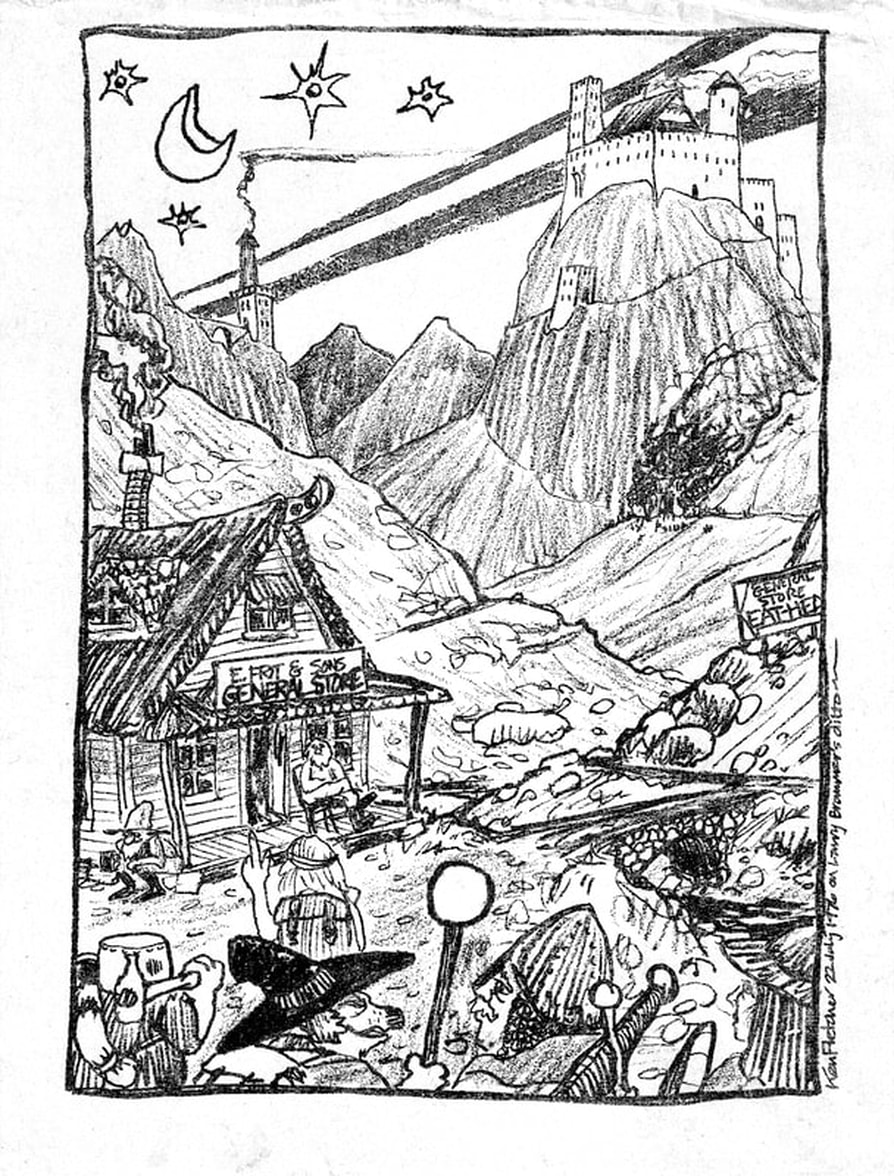
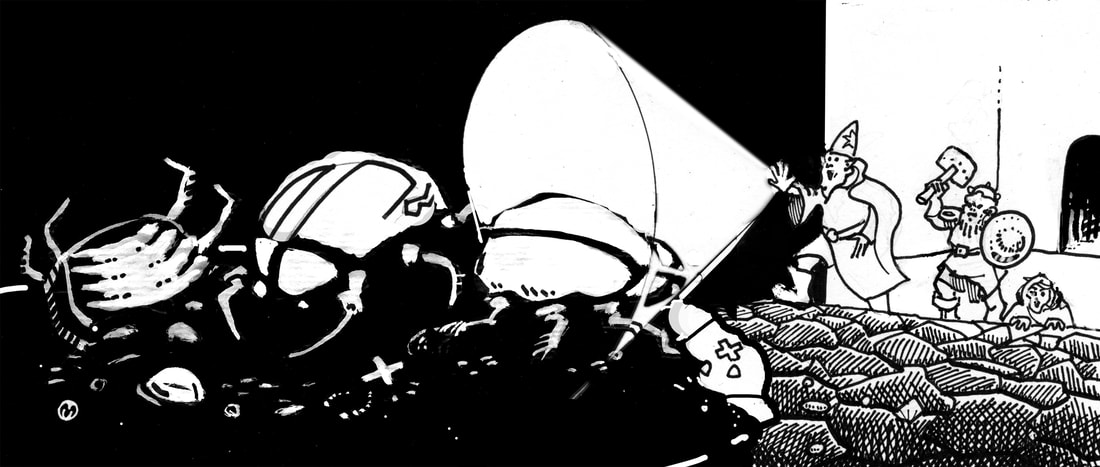

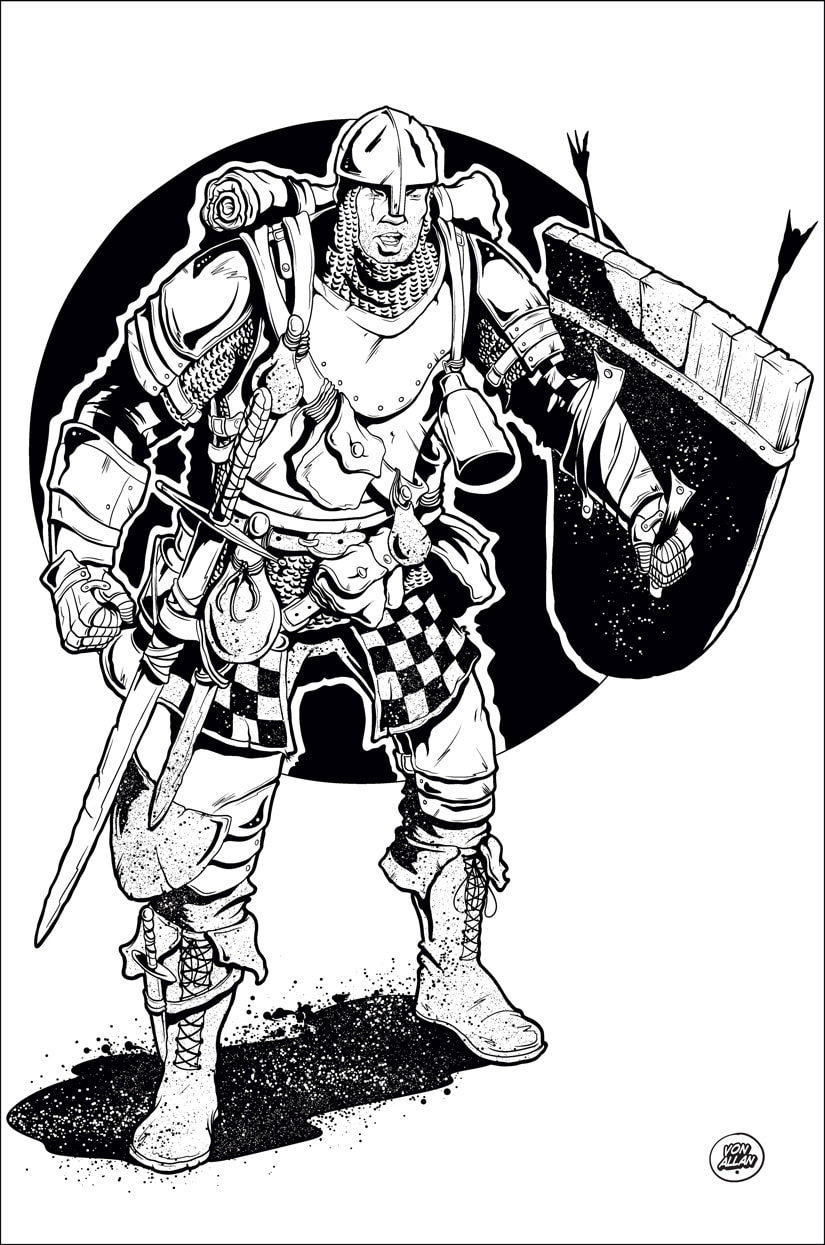
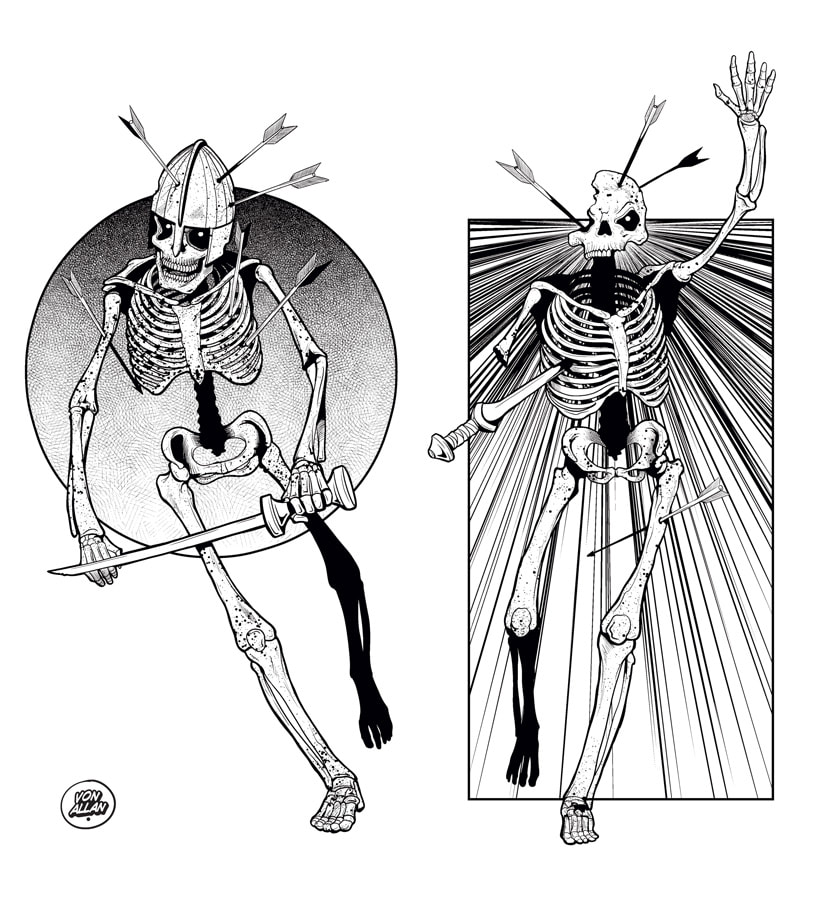
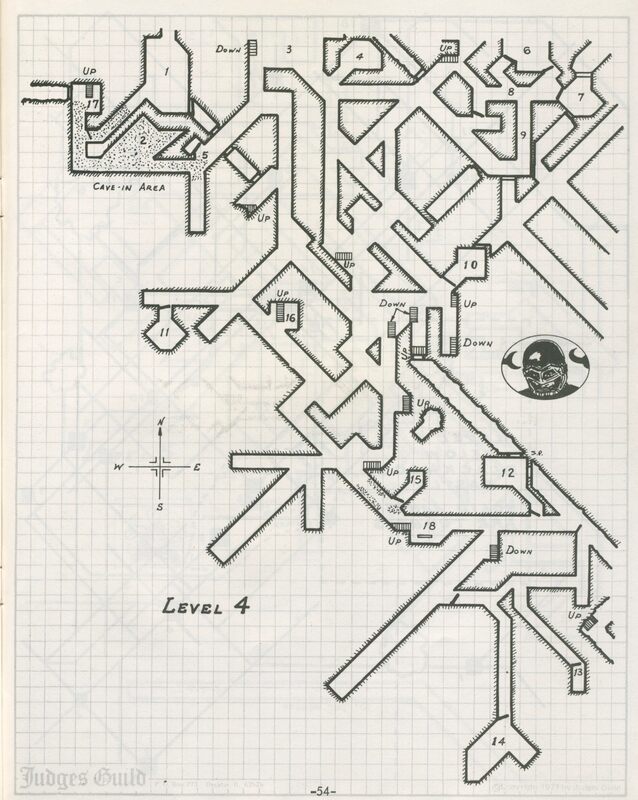
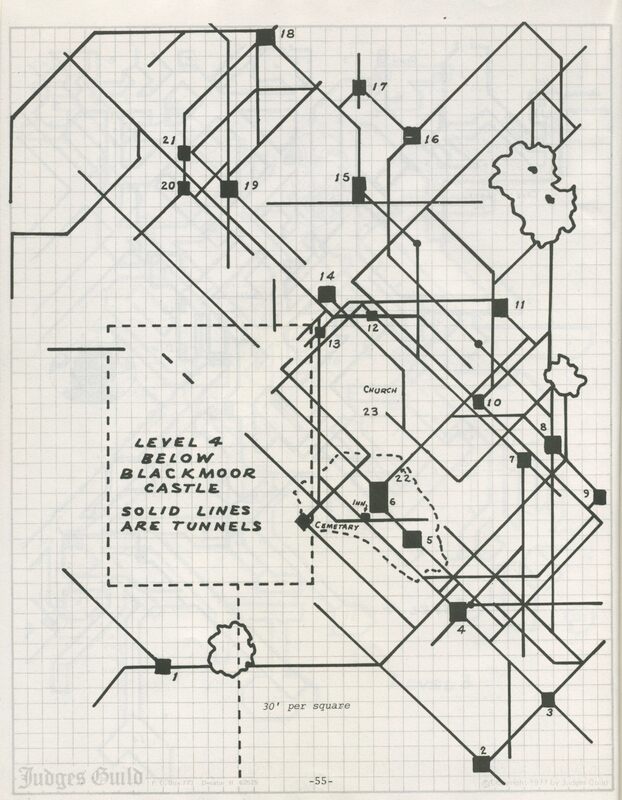
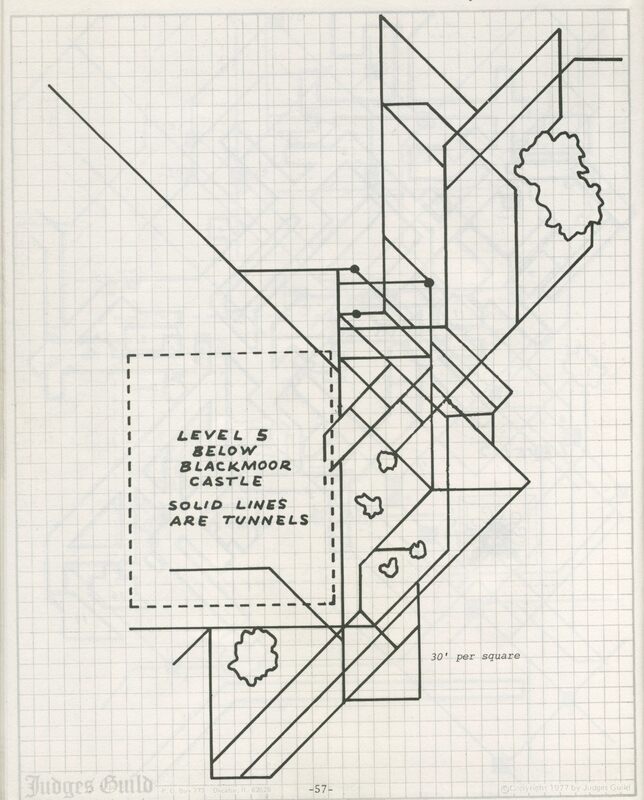
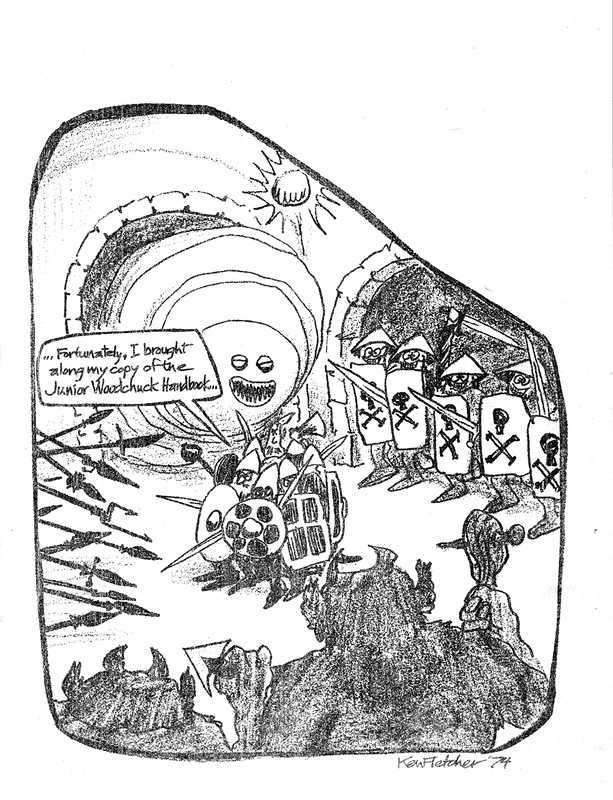
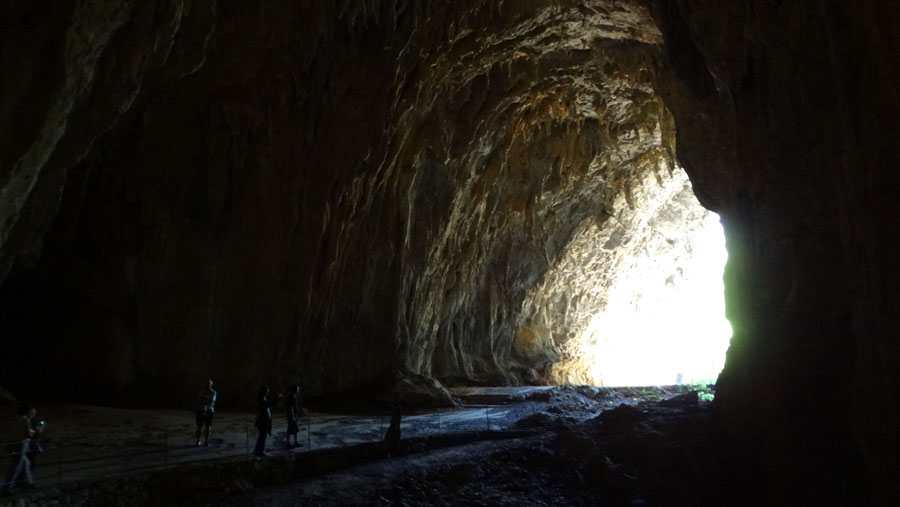
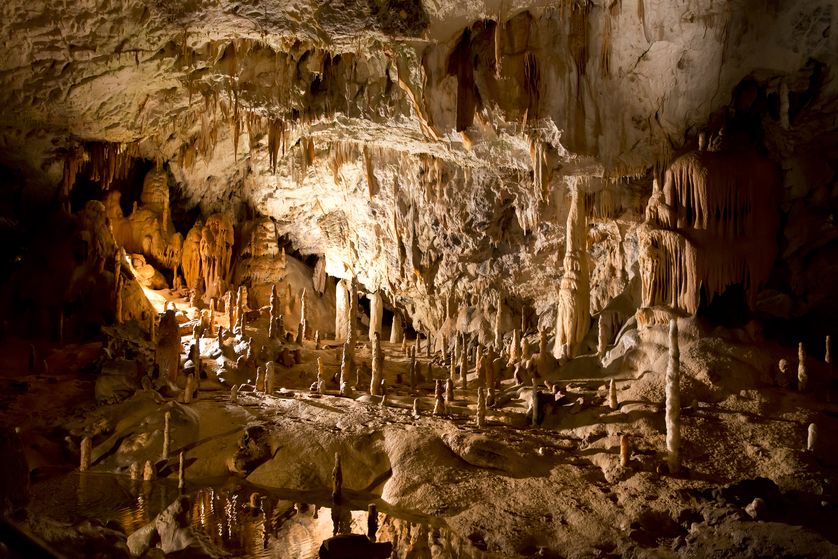
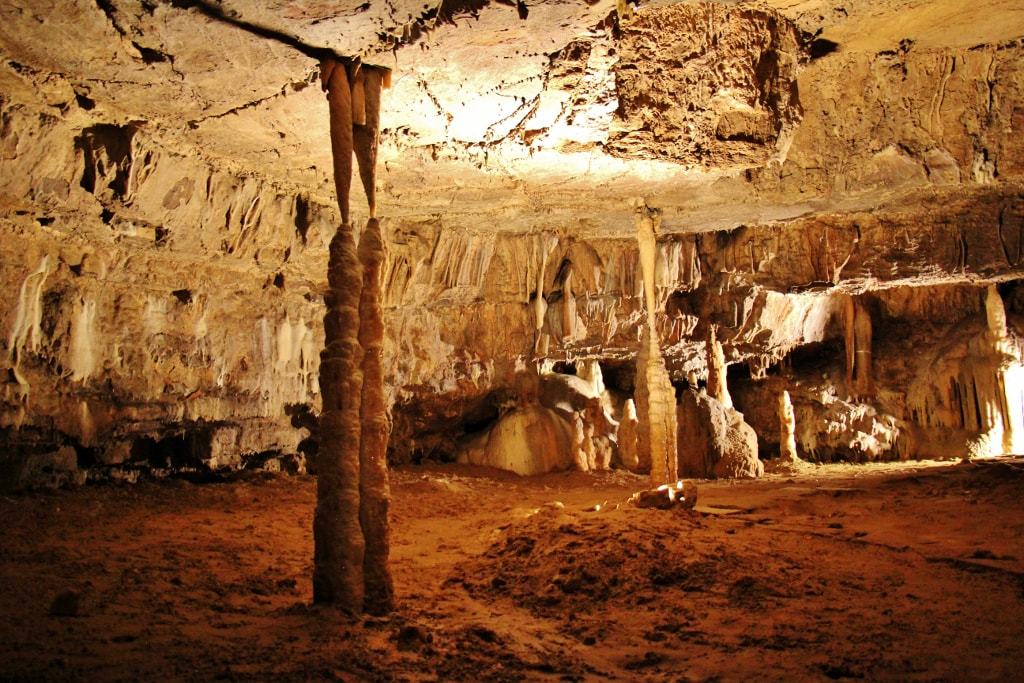
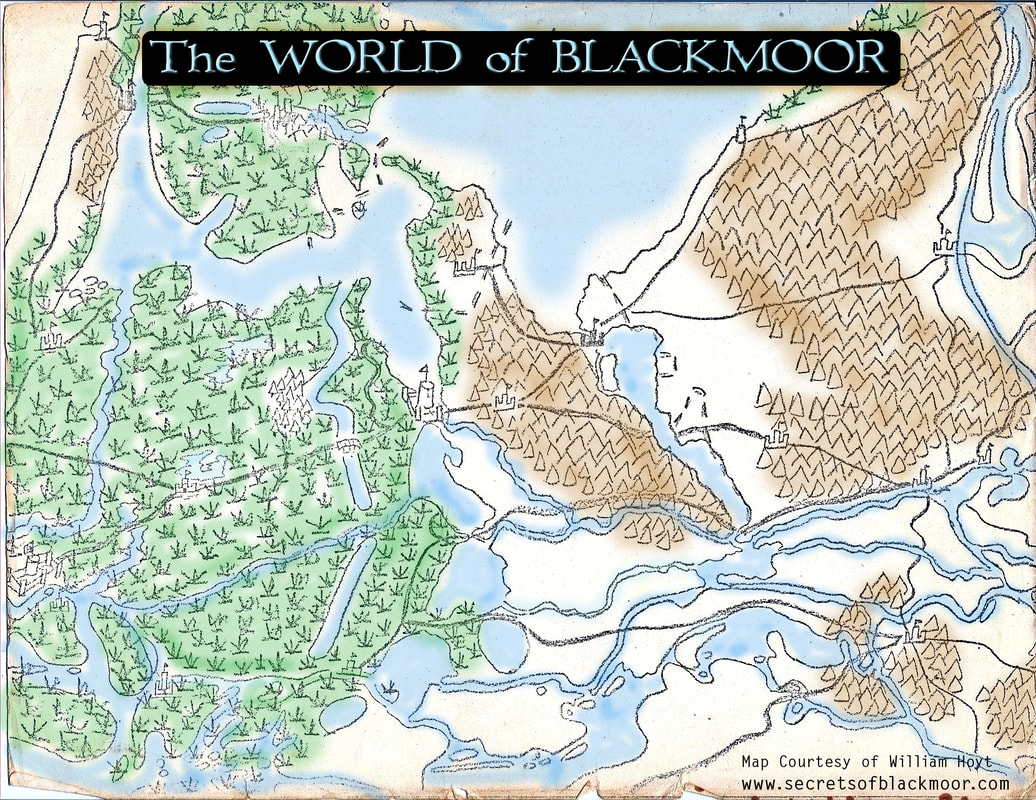
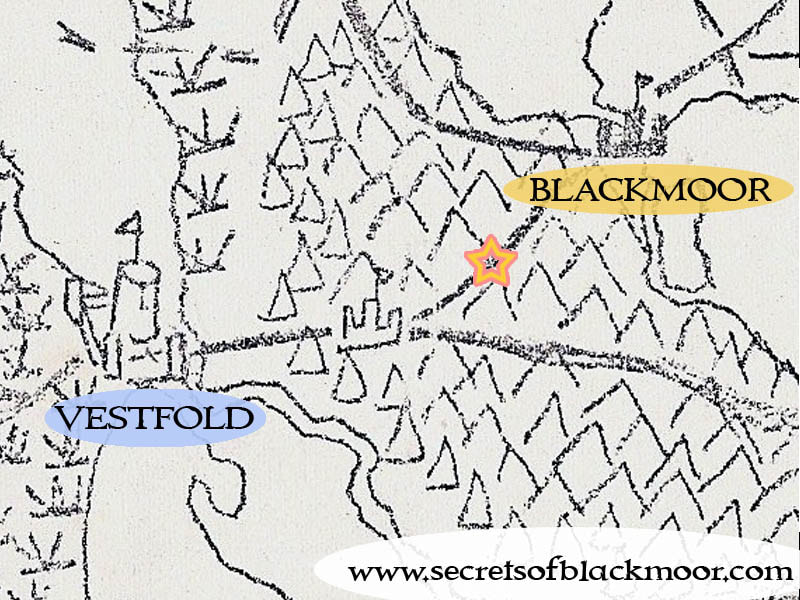
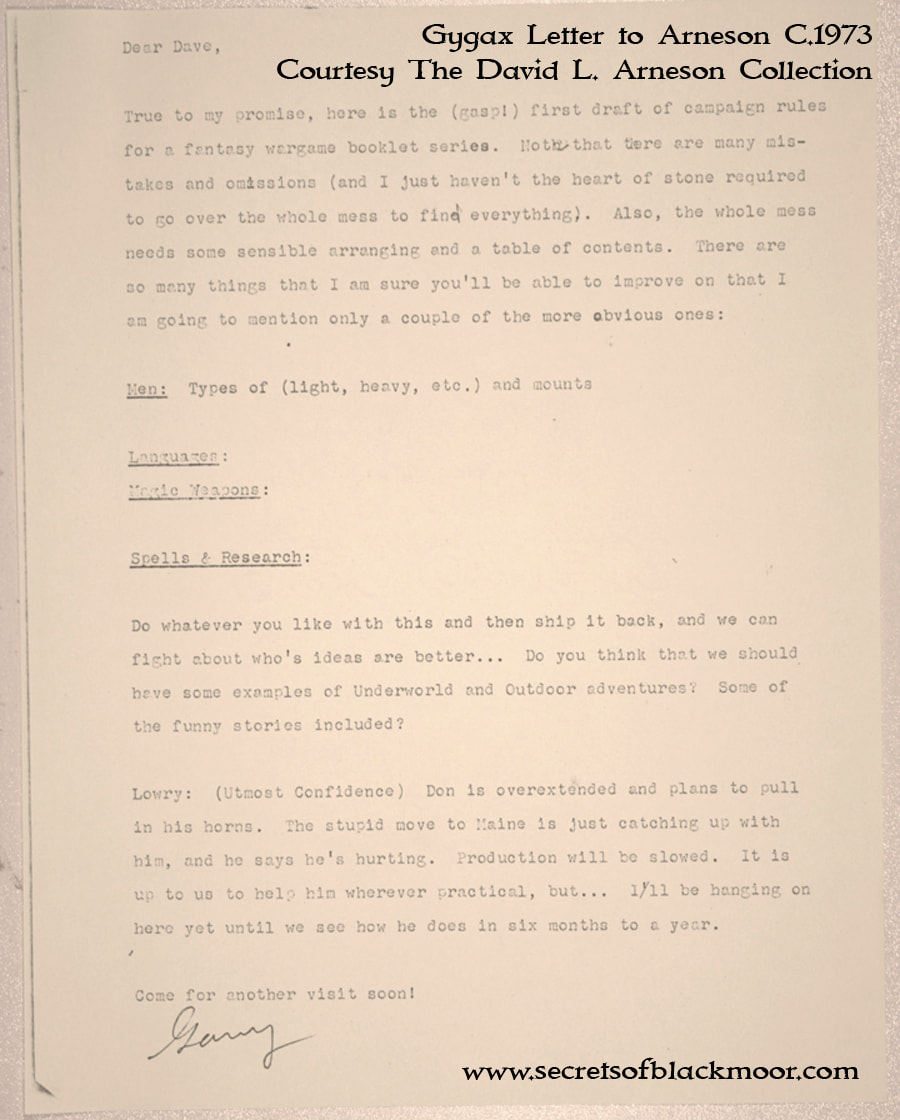
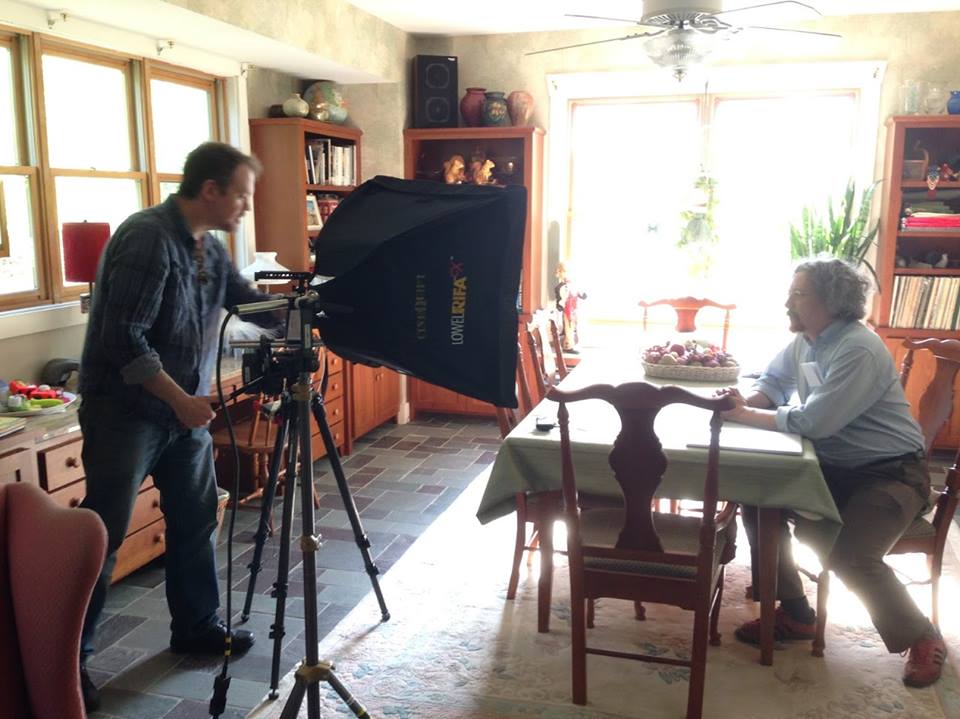
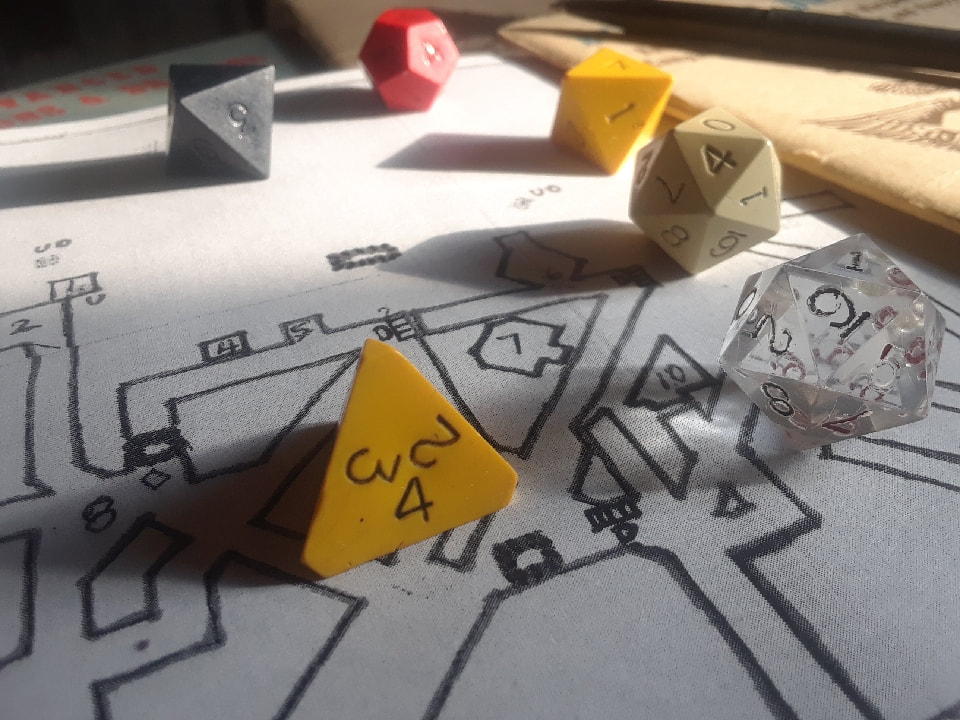
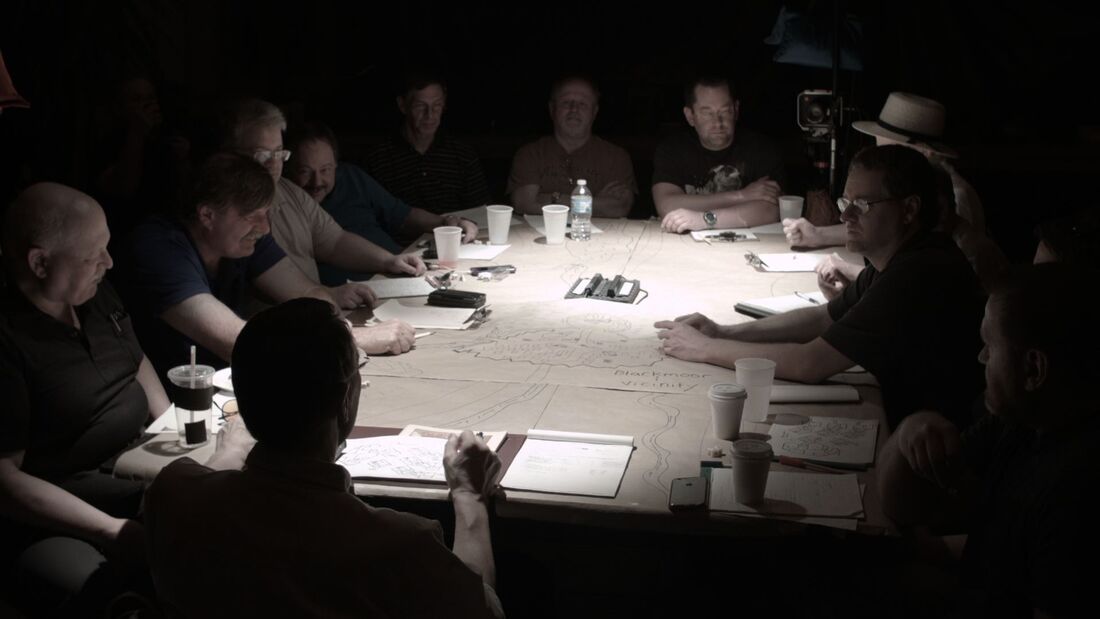
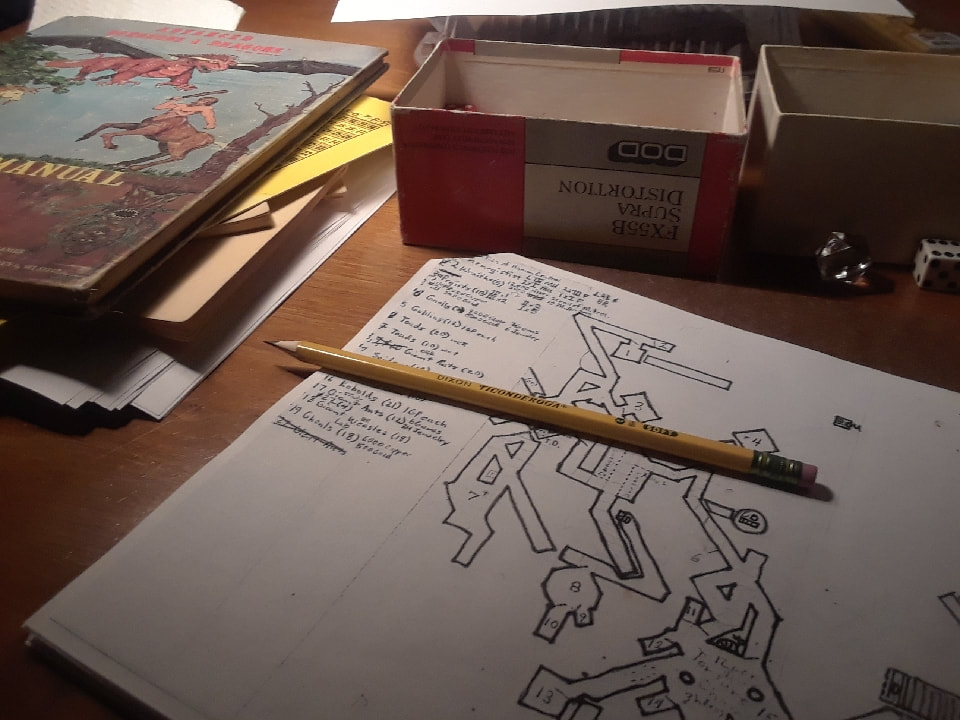
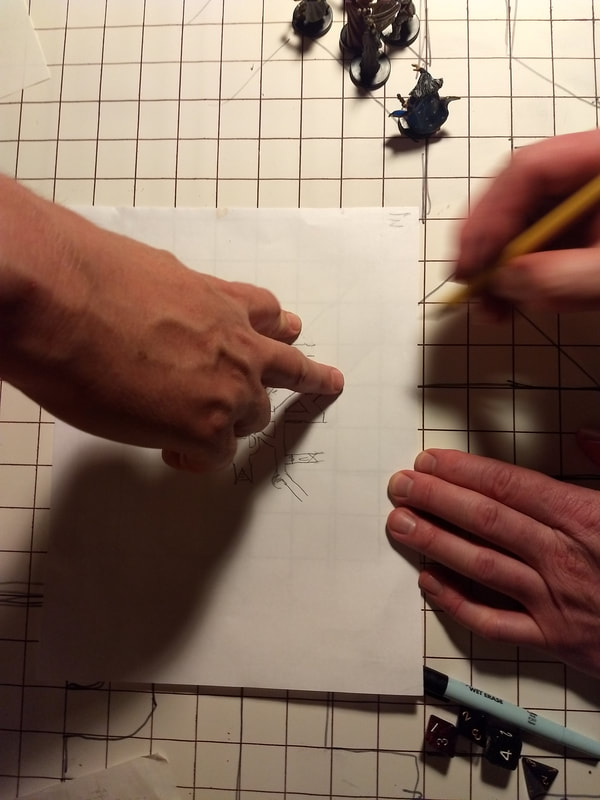
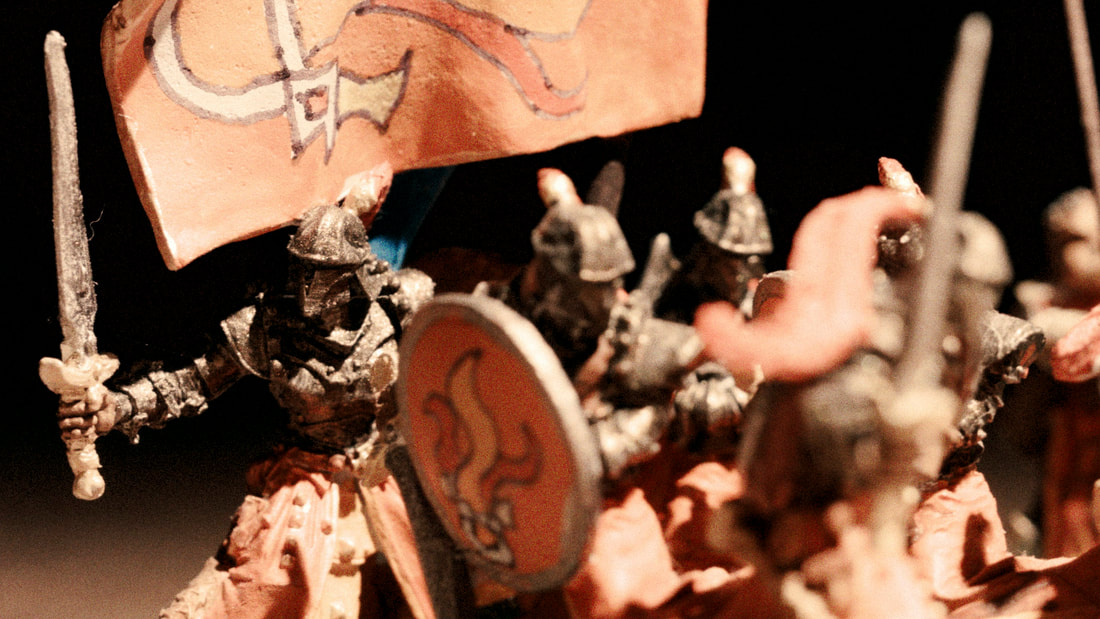
 RSS Feed
RSS Feed